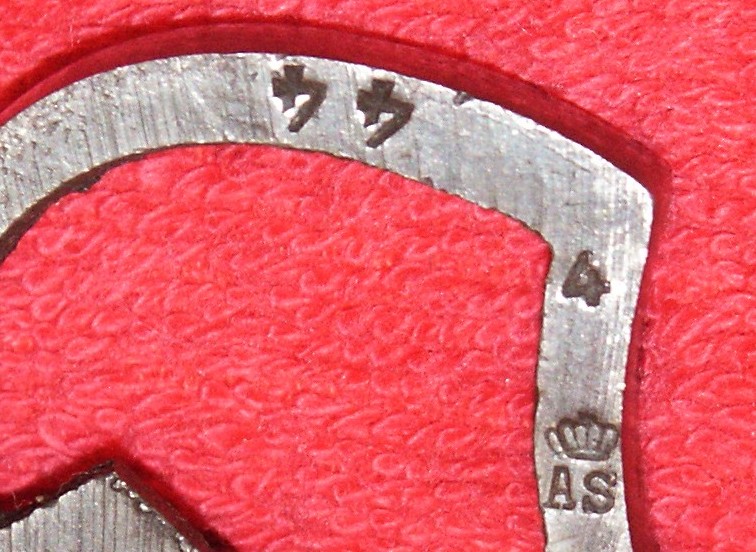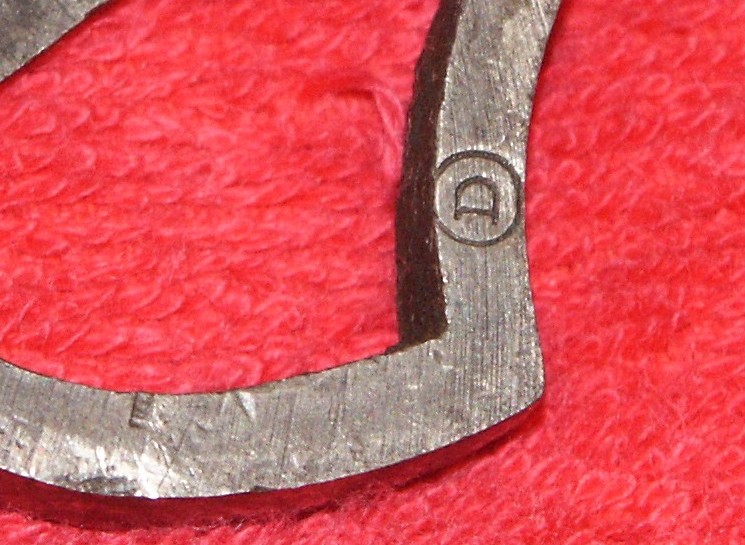Some of the most beautiful work of this craftsman, and many others, are in this book “Liège Gunmakers through their Work. 1800 - 1950”.
For more detail see: LIEGE GUNMAKERS
SPIRLET Albert
Here is a nice little RIC (Royal Irish Constabulary)
revolver in 380 PN caliber. Its system is derived from the concept introduced by
the Englishman Webley in the mid-19th century for his RIC revolvers, then
adapted around 1873 for his British Bull Dogs.
This bronzed example features an octagonal barrel, an
oval-fluted cylinder, a square grip with a comb, a safety on the left side of
the frame, and a trigger guard with a finger rest (unusual for these pocket
weapons): it is therefore a sophisticated object, benefiting from all the
refinements of this system popular in the second half of the 19th century.
Following its exhibition in a museum, the firing pin has been filed and the
barrel plugged.
Markings:
6095, right side of the frame, hammer, inside of the
grips: serial number.
380, left side of the receiver: caliber.
Crowned R: Verification mark for rifled handguns: from
January 30, 1894, to February 26, 1968.
JA on the buttstock skeleton: unassigned.
ELG over a star in a crowned oval, cylinder: Proof house
mark, after 1893.
Crowned L, cylinder: Probably the indication of one of
the two foundries producing the cylinders to order.
AL attached under a star: Inspector's marks, from January
27, 1877.
Crowned AS, grip: Probably the mark of Albert Spirlet.
The owner indicates that the weapon came from his
grandfather who lived in Sweden (1920-2011). He was told that this was his
revolver when he served in the Swedish army. The soldier in question may have
owned this weapon as a backup, but certainly not as a service revolver. Indeed,
Sweden officially used 11mm Lefaucheux 1871 revolvers at the end of the 19th
century, followed by Nagant 1887s, and some MAS 1873 models for the navy. This
small RIC revolver in 380 caliber seems much more compatible with the civilian
market, and in any case, significantly predates the period of service of the
soldier in question.
In conclusion, this RIC-type revolver in
380 caliber was manufactured in Liège after 1894, most likely by Albert Spirlet.
Chris, HPH, Marcel
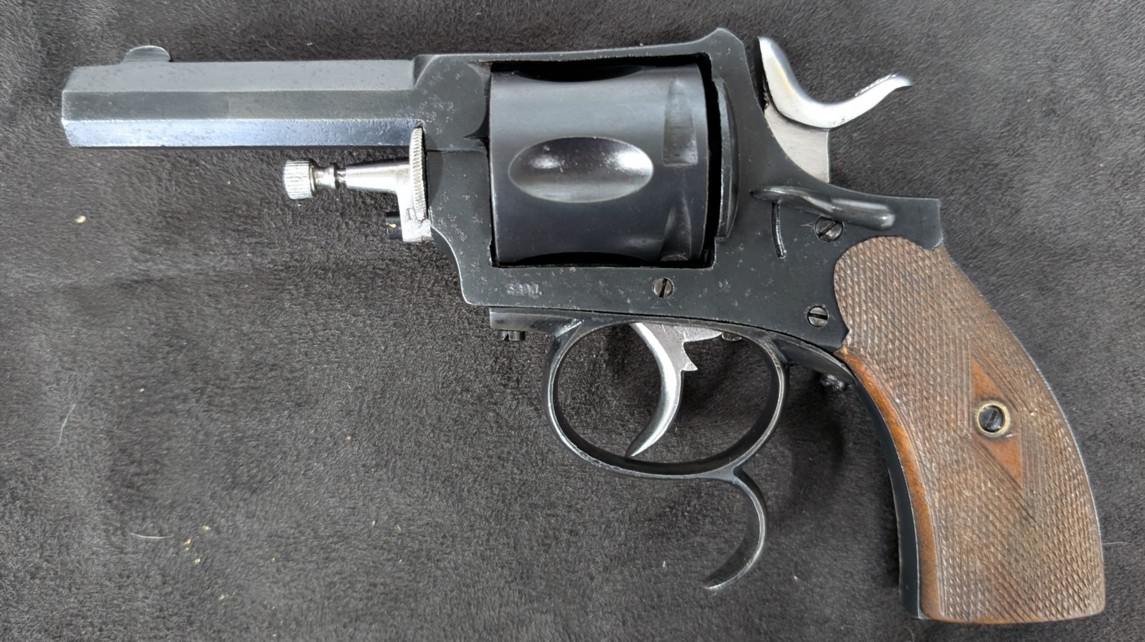
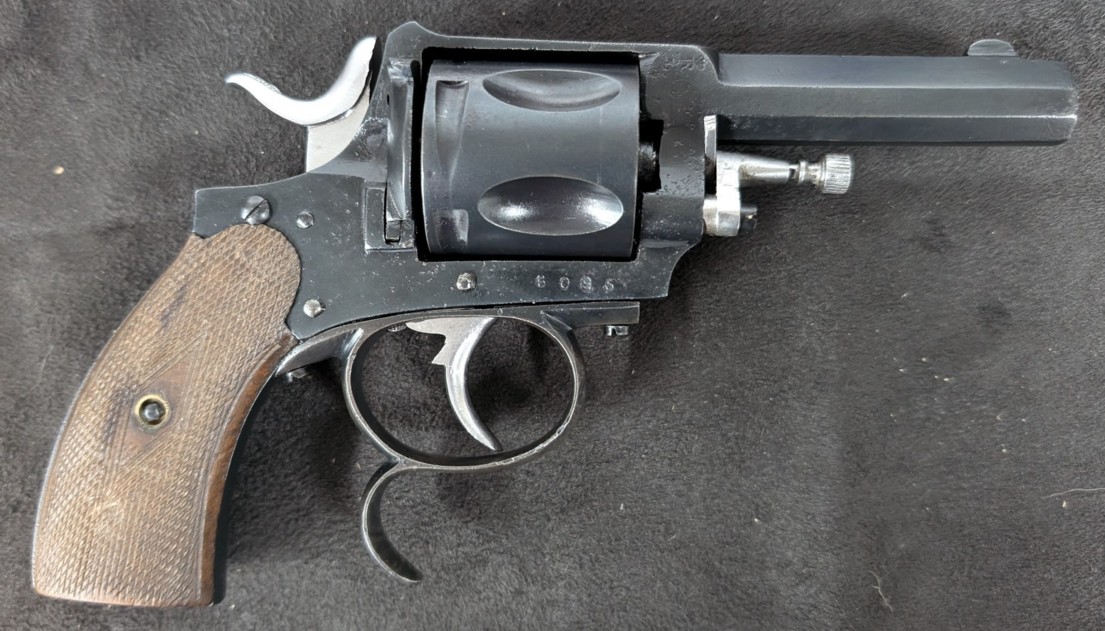
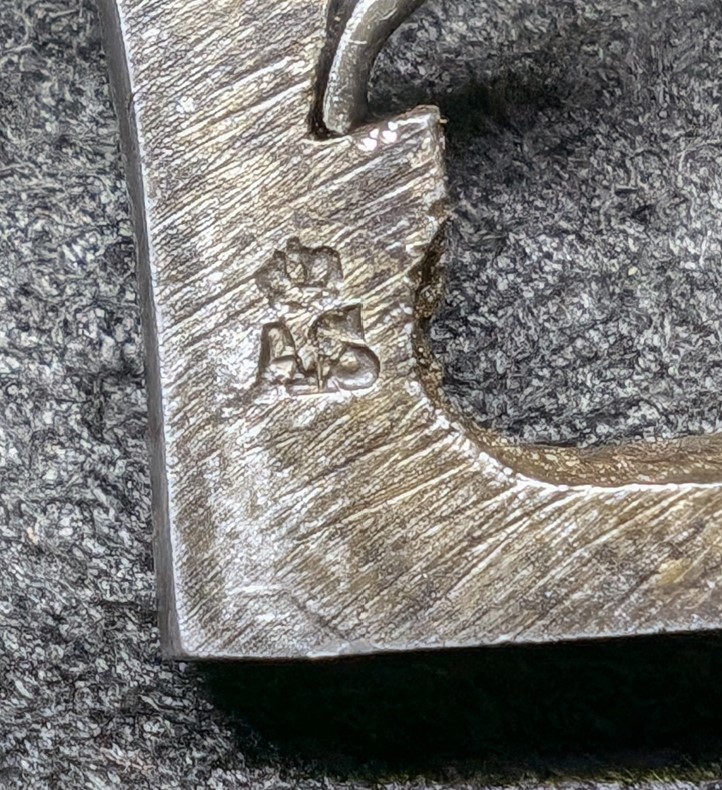
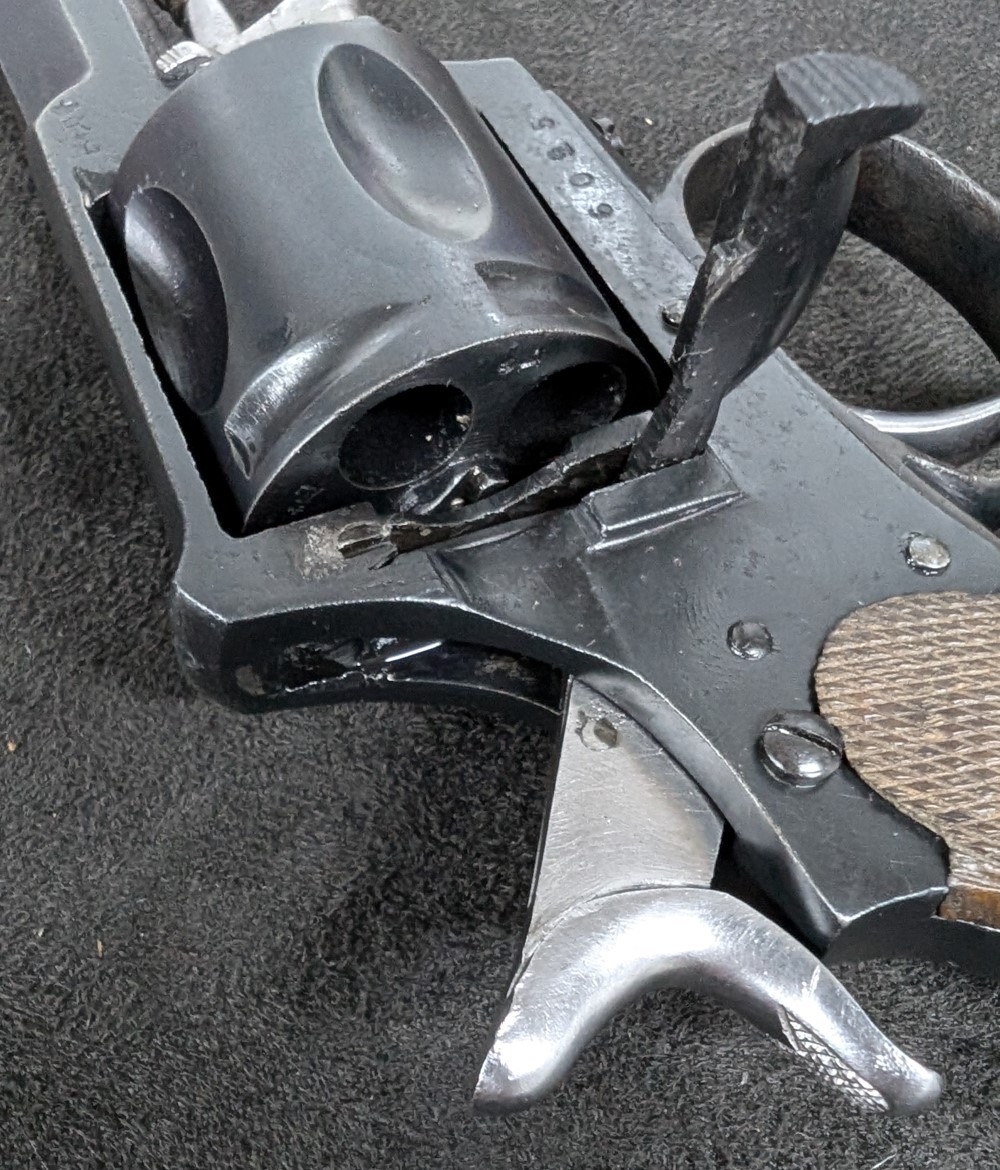
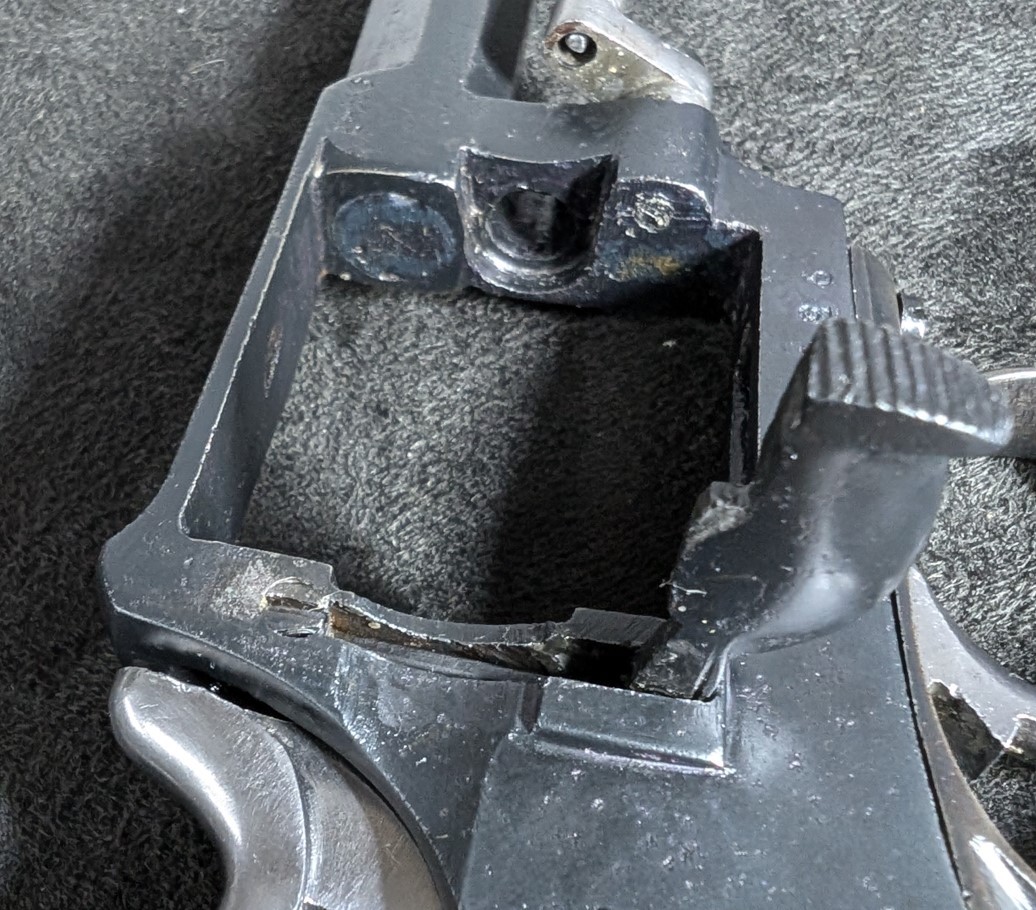
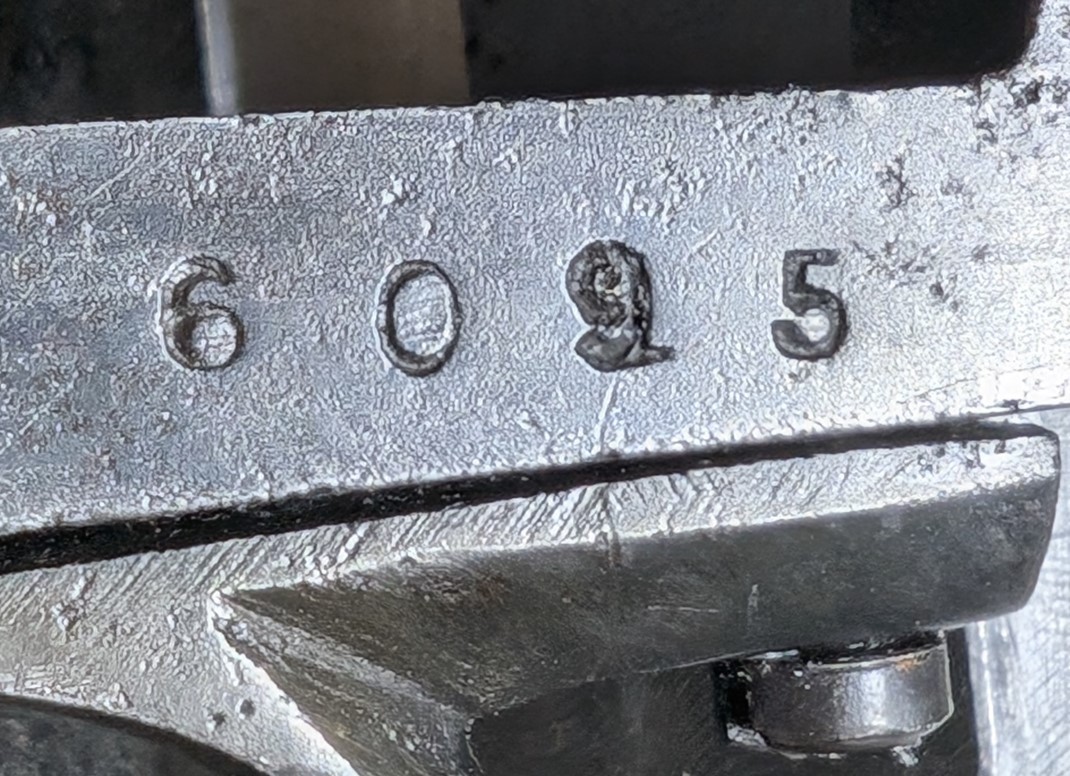
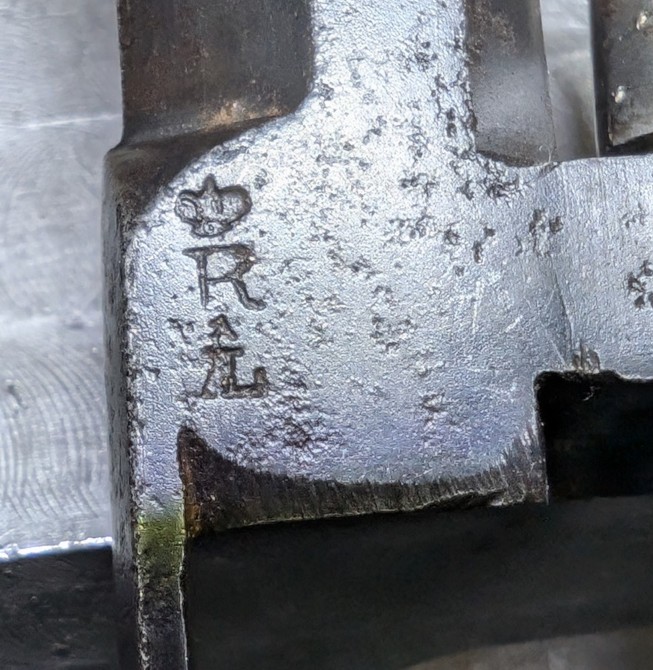
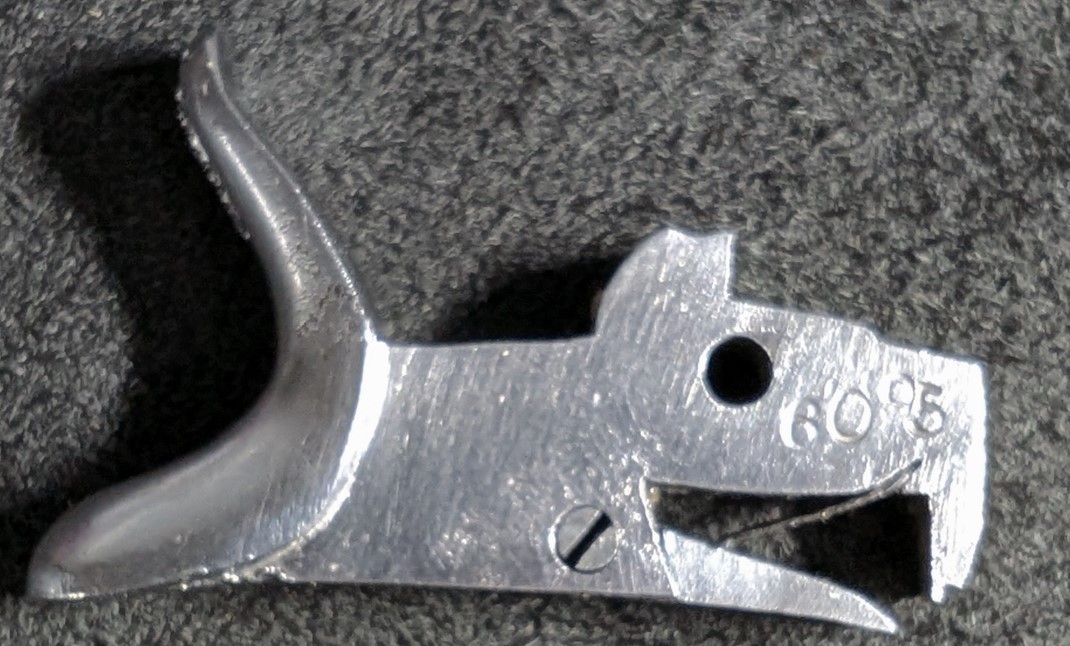
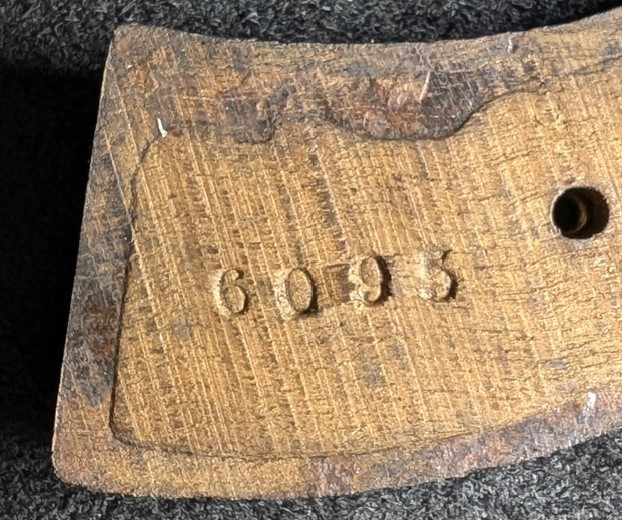

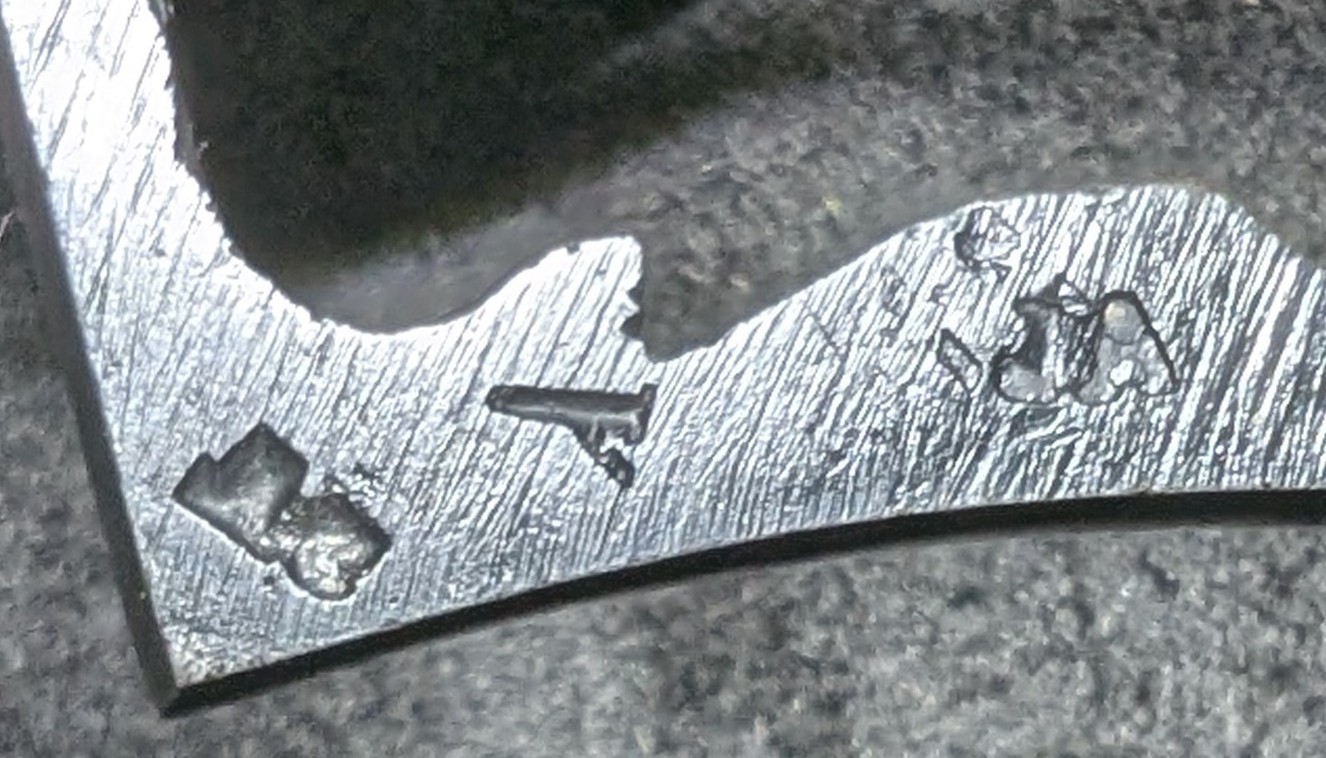
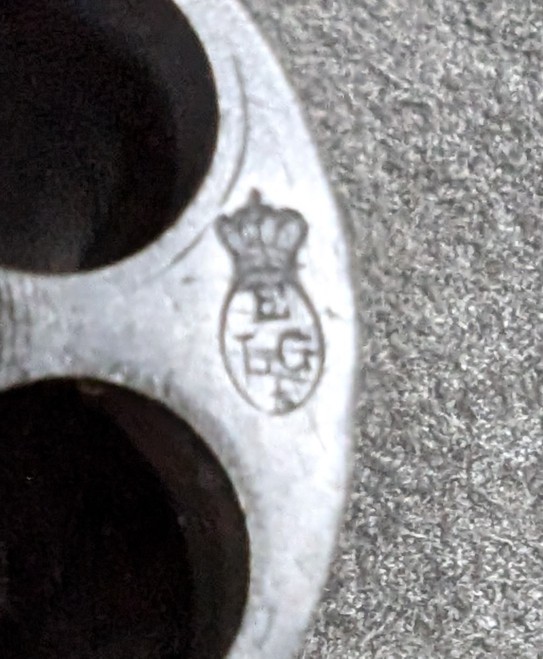
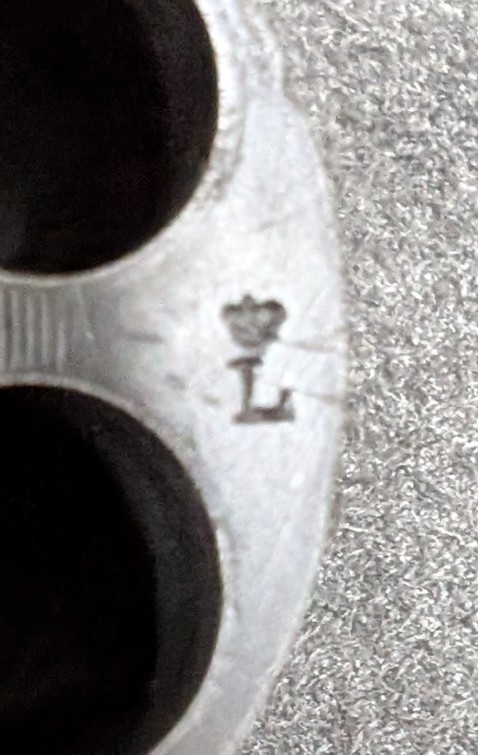
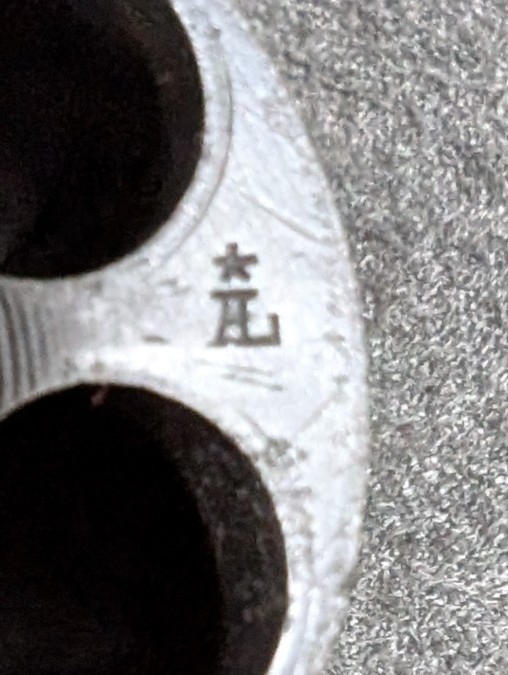
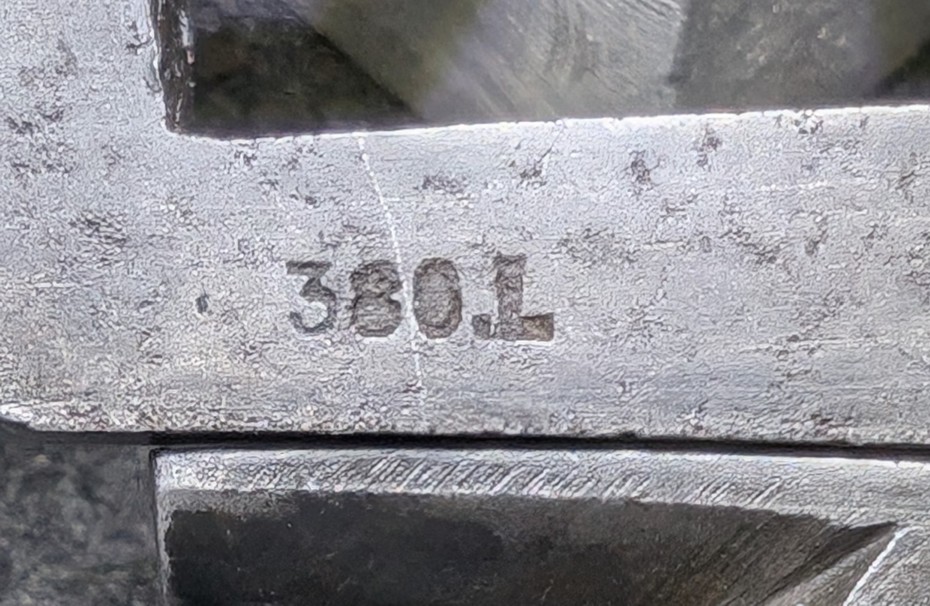
SPIRLET Albert
This is a shotgun with two side-by-side barrels. The
percussion system is hammerless, with a top lever break key. The lock is
engraved with floral motifs, as are the trigger guard and some of the barrels.
These have undergone a treatment reminiscent of Damascus-type steel. This is
therefore certainly a quality piece.
Markings, Hallmarks:
ELG oval over star: proof house hallmark from September
8, 1846, to July 11, 1893.
Perron liégeois: inspection, in use from 1853 to the
present day.
X under star: inspector's countermark, in use from
January 27, 1877.
No for bullet: choked smoothbore, in use between 1878 and
1897.
AS: manufacturer's initials? Albert Spirlet, who signed
himself in various ways (AS under a crown, in a diamond, between foliage, and
sometimes with his full name)? Although this gunsmith is best known for his
revolvers, a shotgun is attributed to him, subject to reservations, on the
Littlegun website:
https://www.littlegun.be/arme%20belge/artisans%20identifies%20s/a%20spirlet%20fr.htm
17.2: choke. 16 gauge?
EL in English cursive: Liège hallmark for provisional
black powder proofs, in use from 1852 to the present day.
1583: weapon numbering.
17: choke?
N: ?
F by order of A Vernier in Marseille, meaning Made by
order of Auguste Vernier in Marseille.
In conclusion, this is a 16-gauge,
side-by-side black powder shotgun, manufactured in Liège, possibly by gunsmith
Albert Spirlet, for sale in Marseille by his colleague Auguste Vernier.
Examination of the markings and hallmarks allows us to establish its manufacture
between 1878 and 1897, a period when the "Not for bullet" label was used, and
consistent with the other markings.
Chris
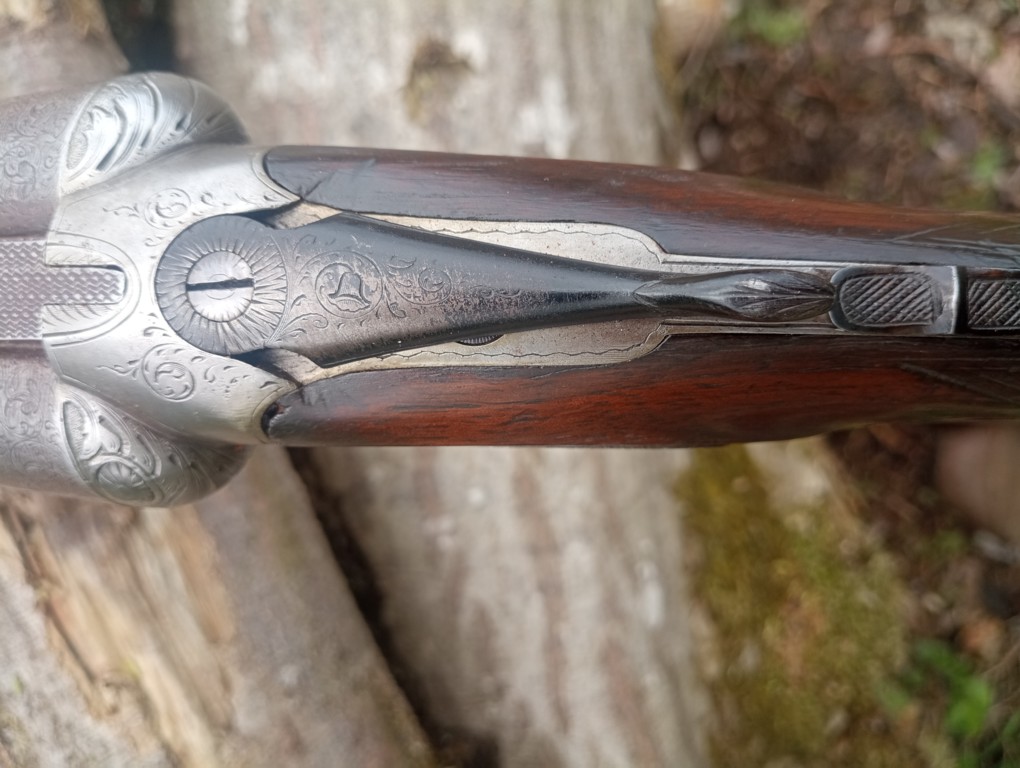
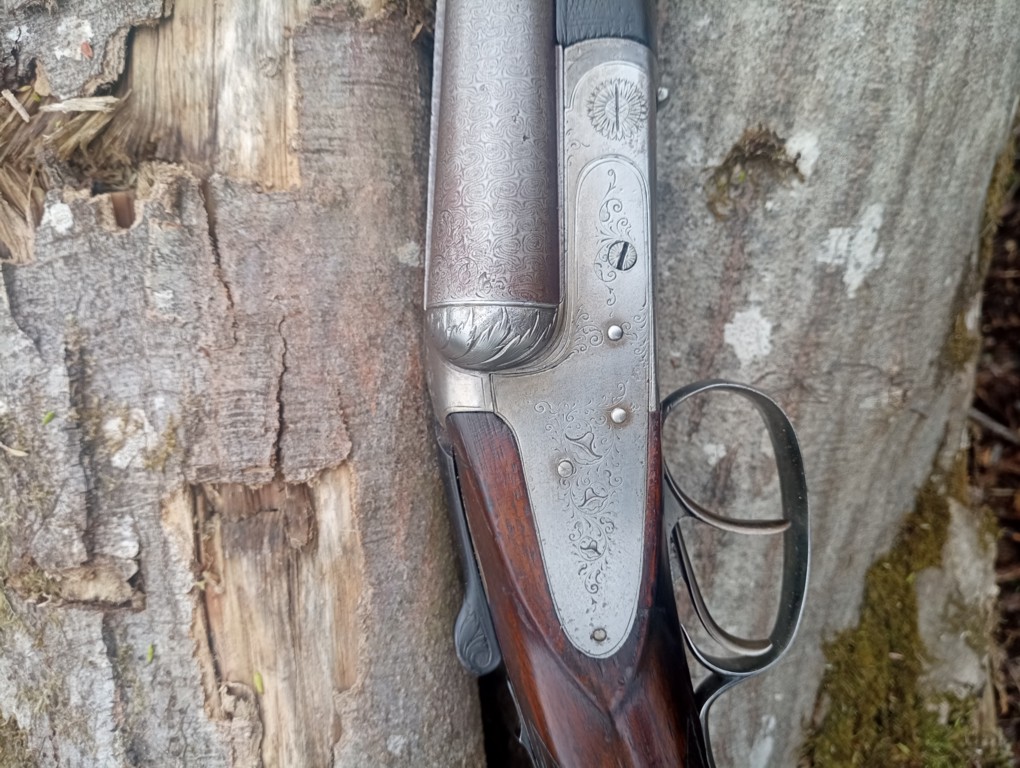
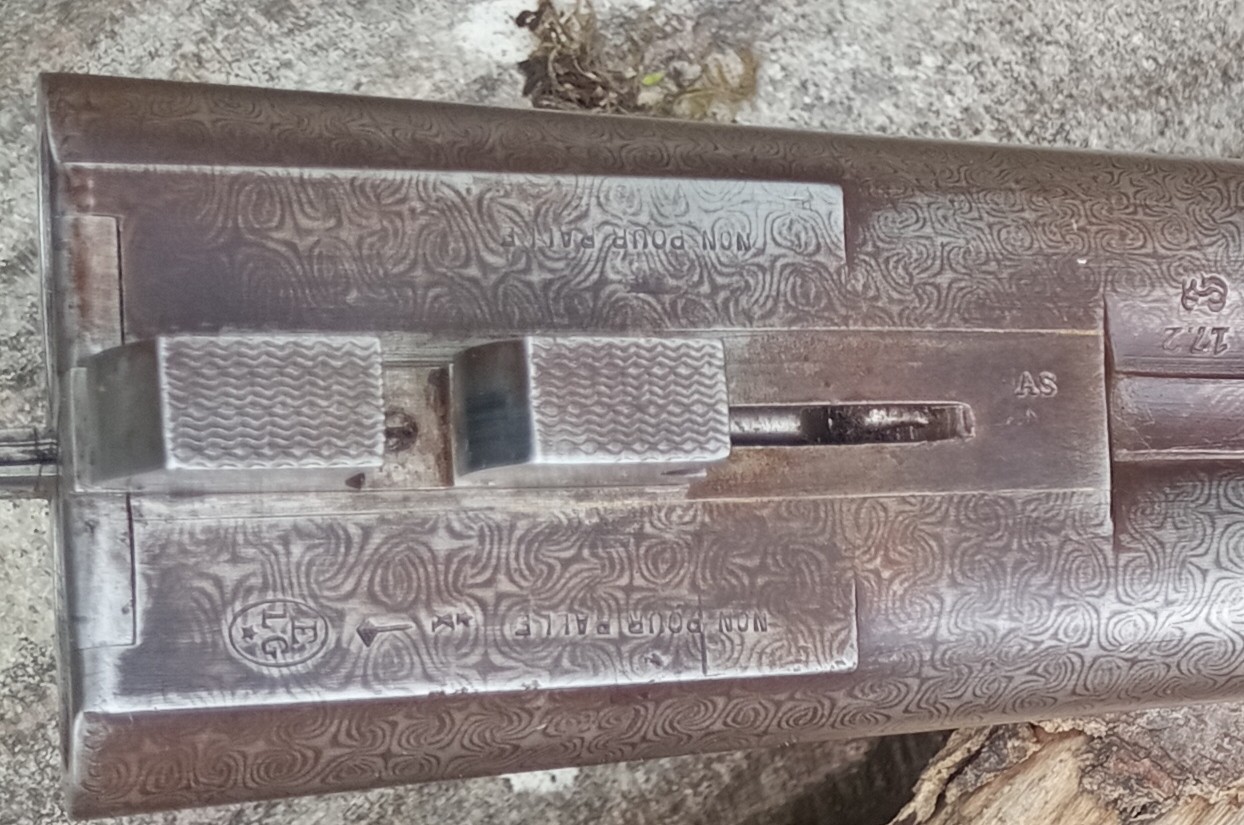
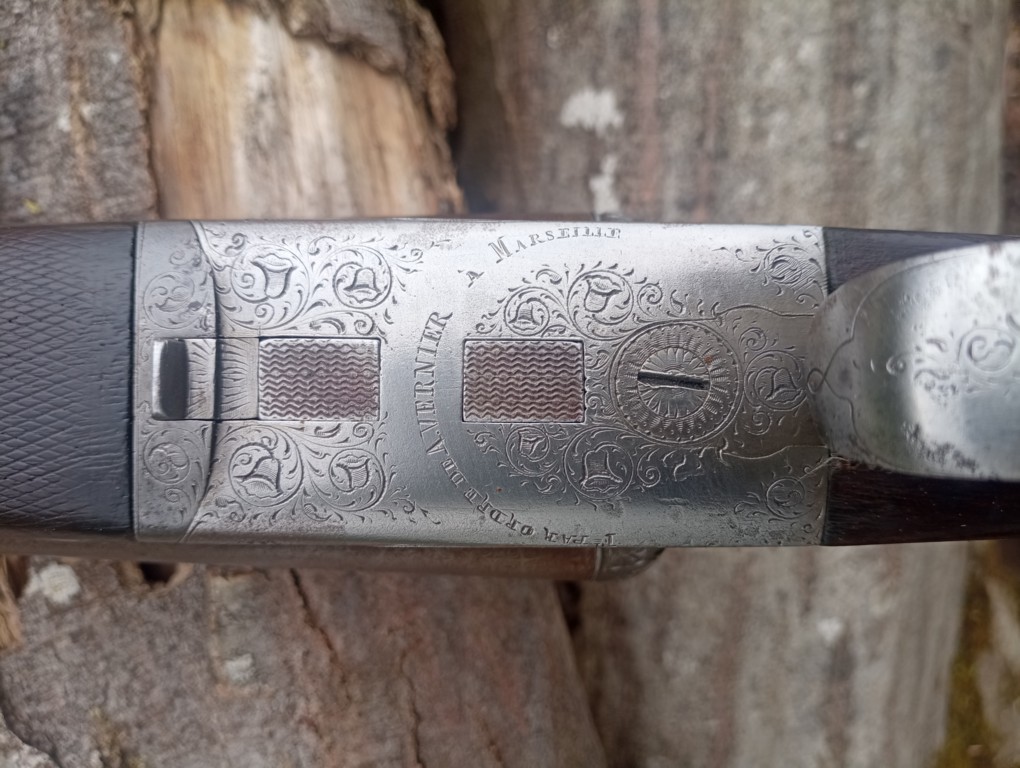
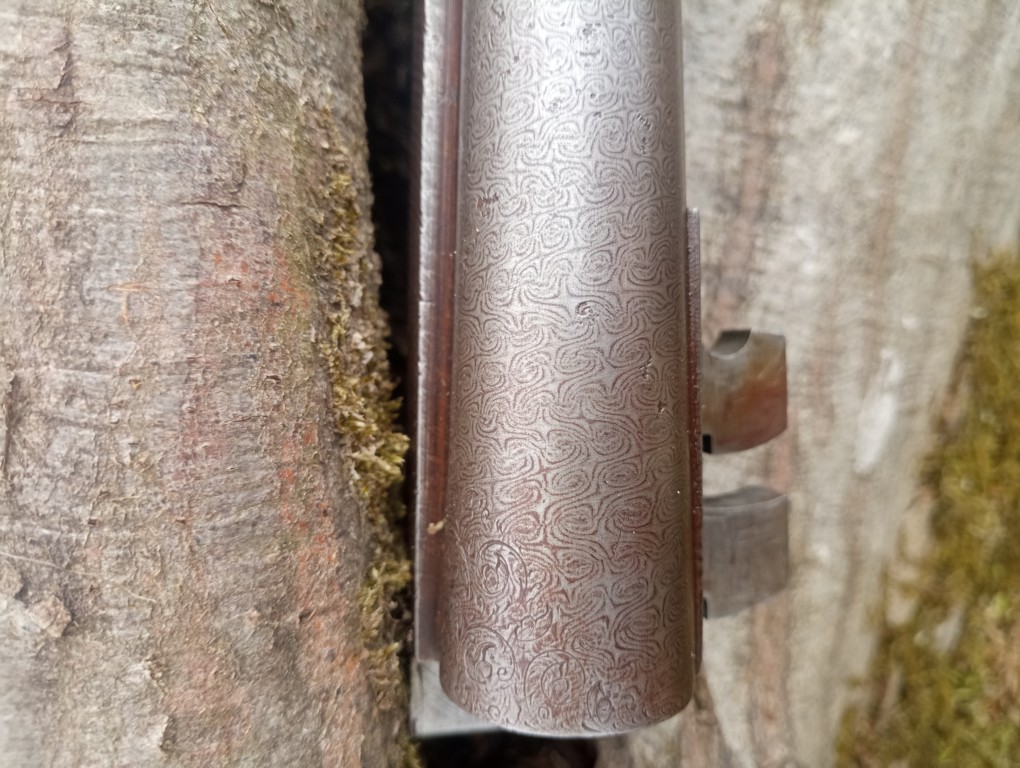
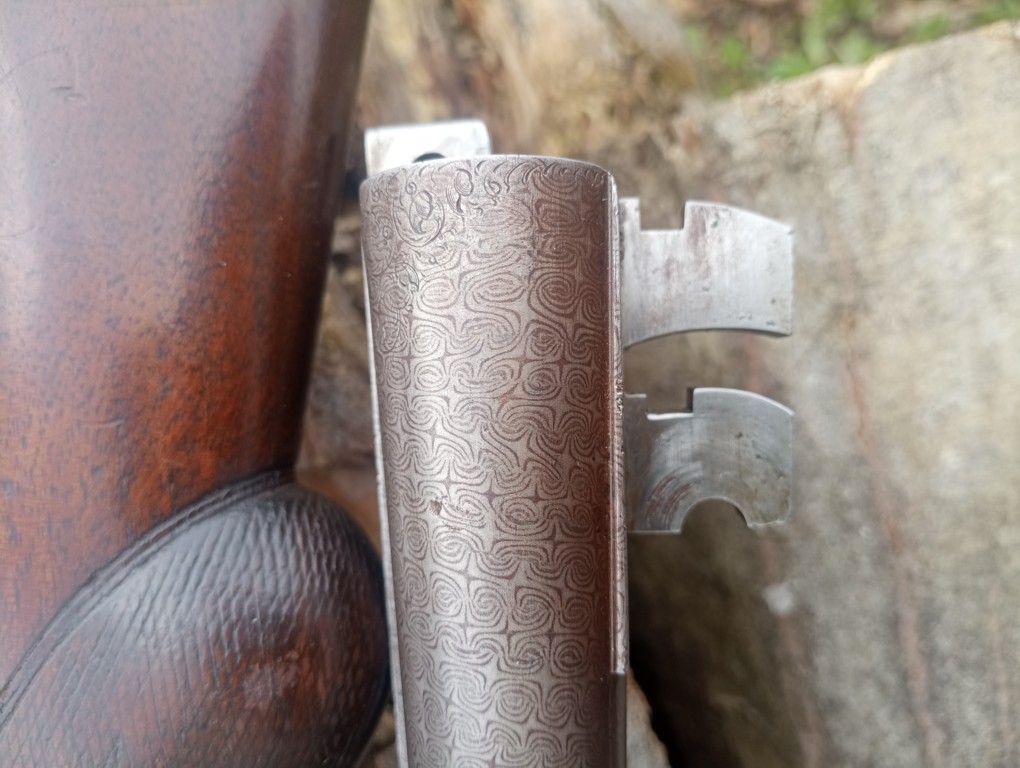
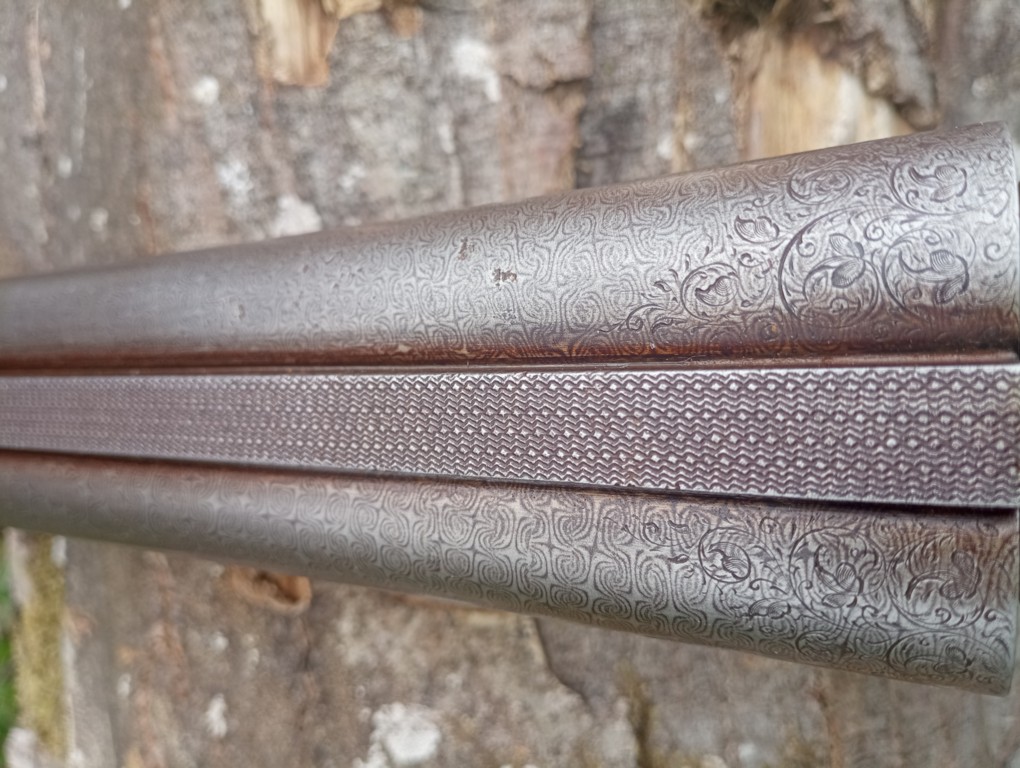
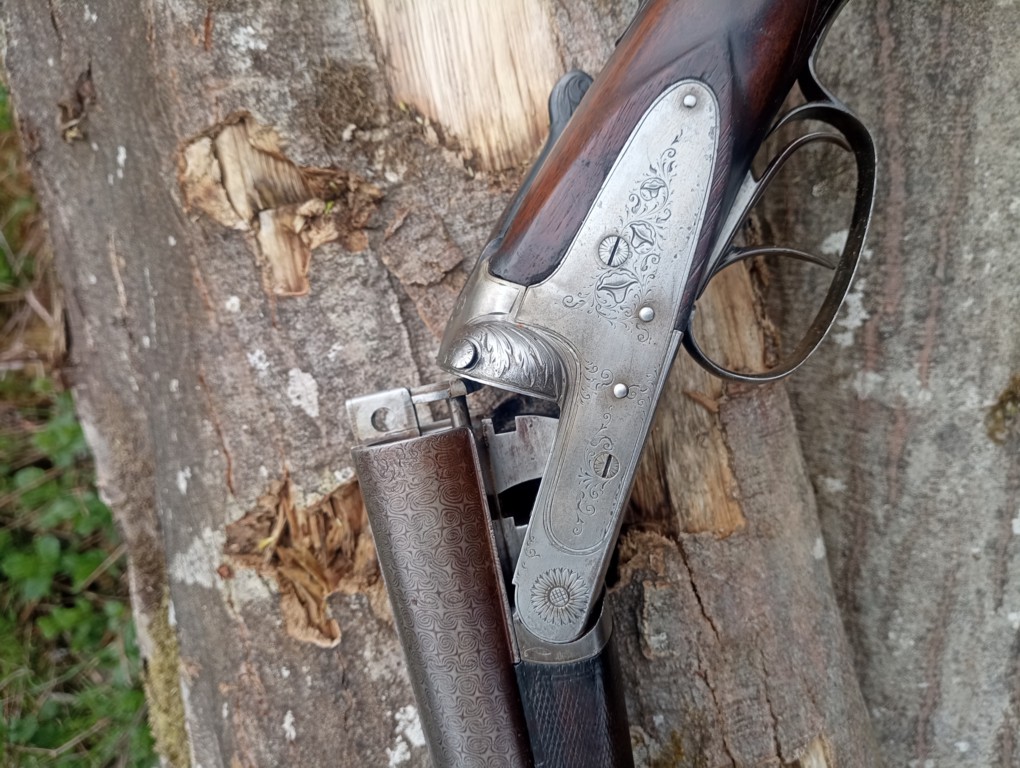
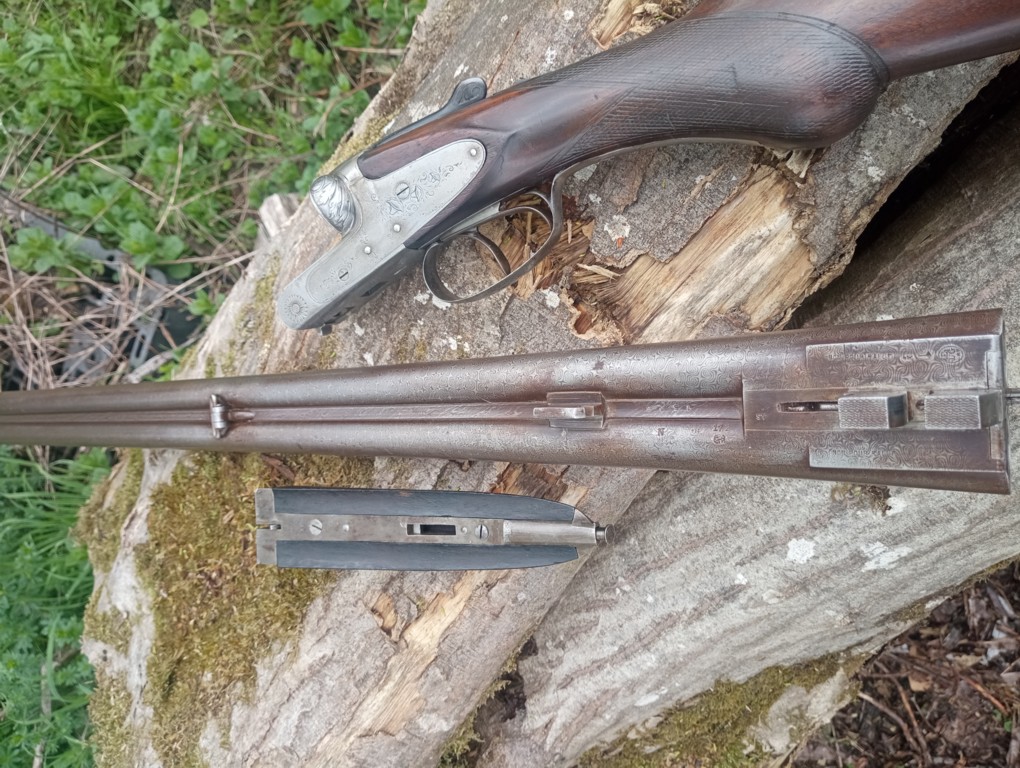
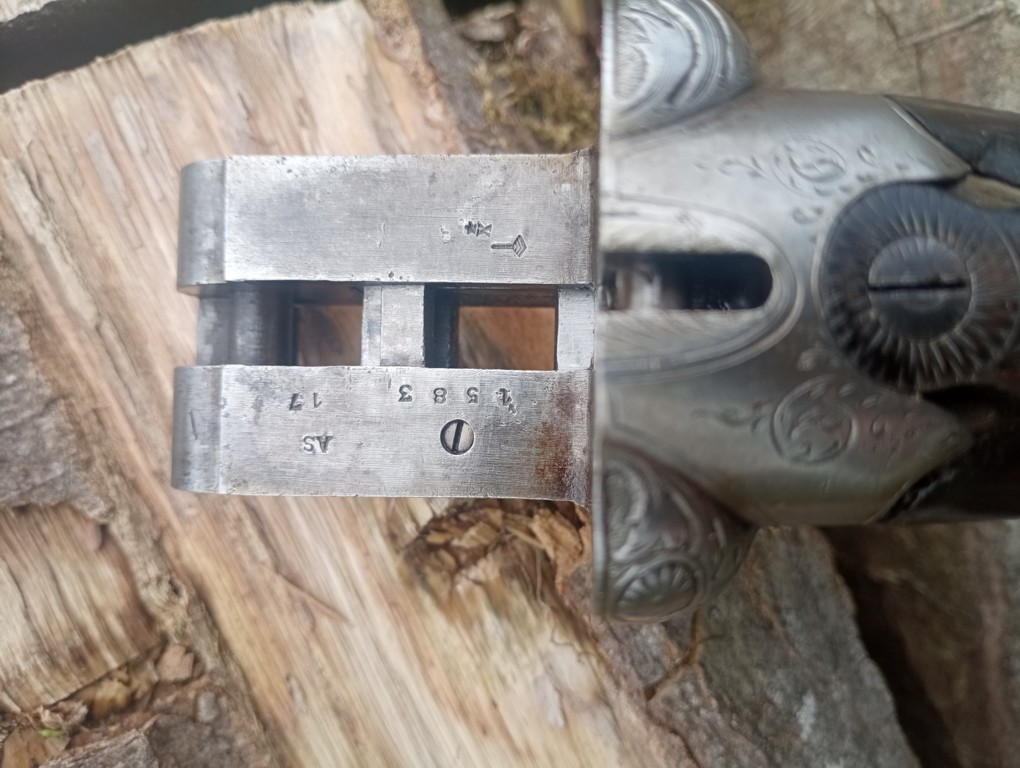
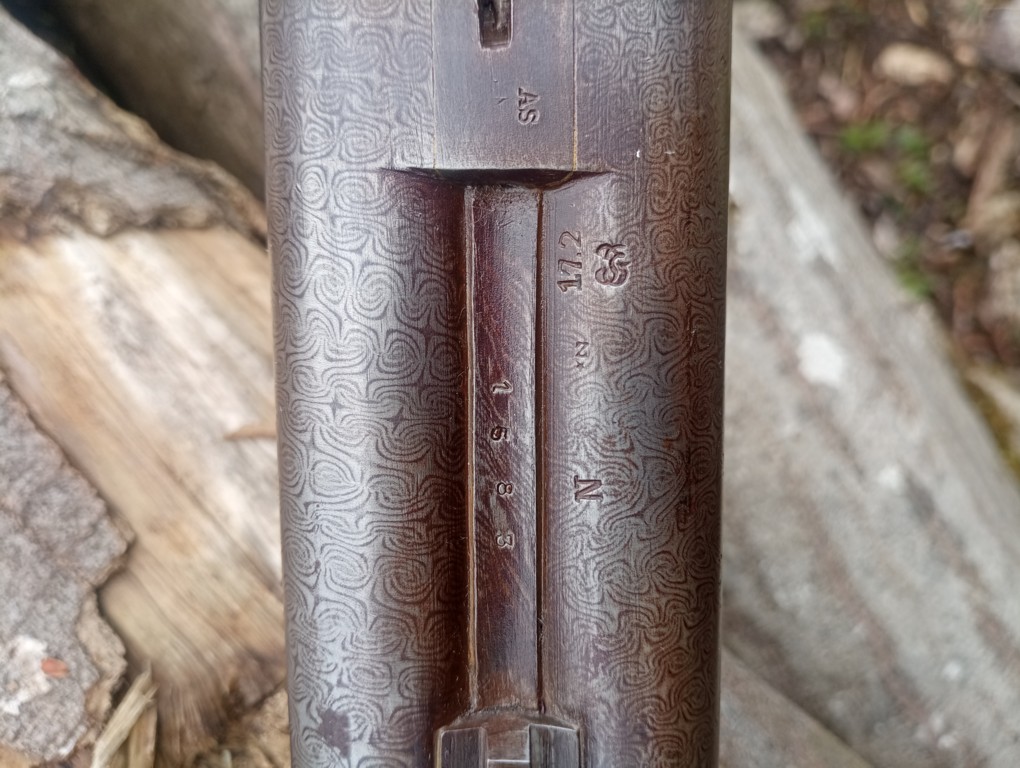
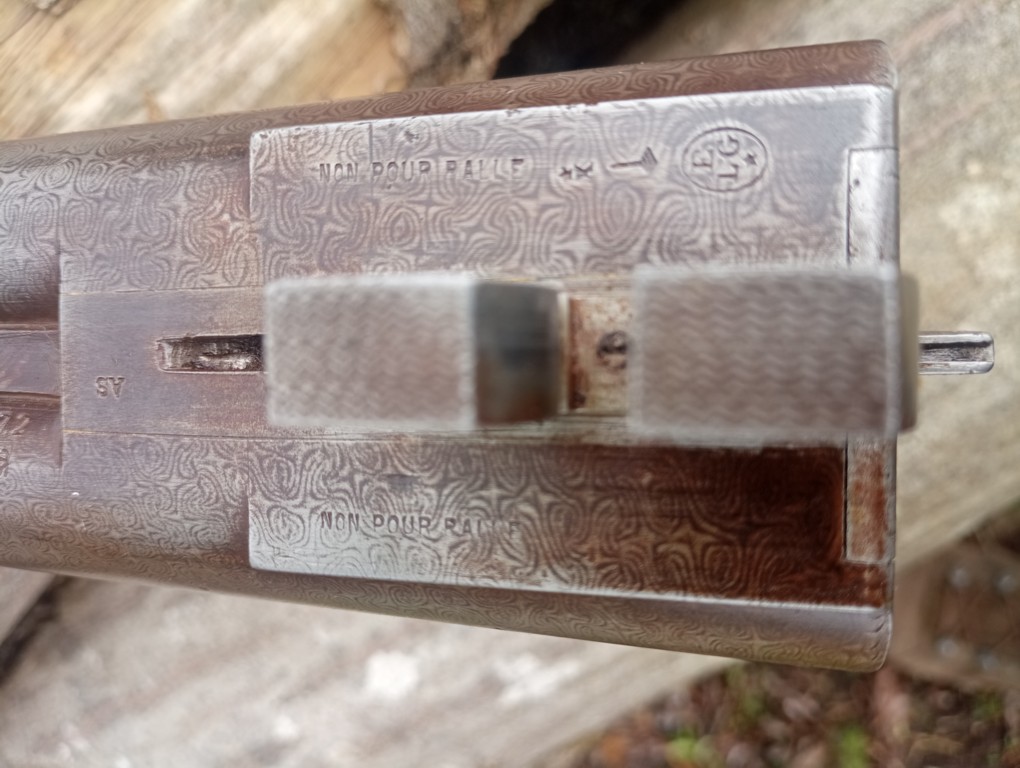
Spirlet Albert
The state oxidized of this weapon does not facilitate
the identification; I think nevertheless that it could be a question of a
revolver model 1869 of
Albert Spirlet,
quay of Boverie, 31 to Liège which was the author of 16 patents of 1860 to 1876.
This
revolver is with smooth cylinder with six shots (Calibre not communicated). The
barrel is with eight sides, with bead out of U and front sight in half-moon. The
system of opening of the weapon consists of a push-button placed in front of the
trigger guard. Once actuated it releases the cylinder-barrel unit to the top
(tip-up) while swivelling on the notch of aiming.
Considering its state, no punch of tests is visible on this part. A mark however
could remain readable, namely:
Prix du
gouvernenent
(Price of the government): It is probably about the Belgian government? Many
contests of shootings often encouraged by the State were organized in Belgium in
second half of the 19th century. It is here most probably about one 1st price of
shooting.
Patent
Spirlet
corresponding to this weapon could be N° 26.602 of the 19.11.1869.
The
weapon carried at the beginning a beautiful Damas to the fine gold which
suffered well with the time.
GG
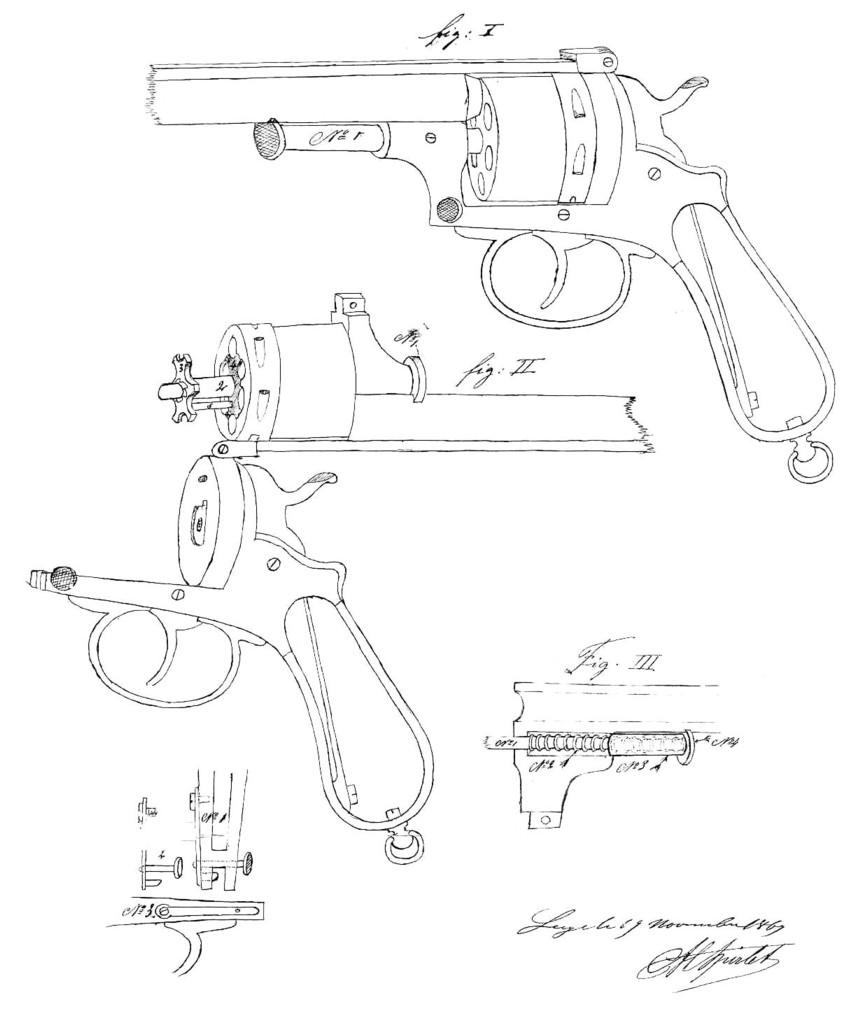
Spirlet Albert
Here is a very interesting and certainly rare revolver
of Albert Spirlet, armourer in Liège, Quai de la Boverie 31 in Liège. He filed
sixteen patents between 1860 and 1876. It has already been extensively mentioned
on the site.
Apart from the inscription on the top barrel of the
gun, only the acceptance mark ELG on star in oval, used between 1846 and 1893,
and a sub-star T, countermark of a controller, used between January 27, 1877 and
1968.
In its issue 334 of July-August 2002, the "Gazette des
Armes" published a lengthy article by Henri Vuillemin on the ABCD revolver, its
genesis and its competitors. In particular, he mentions a copy in the hands of
Jean-Pierre Bastié, which, like the revolver shown here, also bears the same
inscription “THE A.B.C.D. REVOLVER INV. AL. SPIRLET. PAT SEP. 2:72 MARCH. 13:75
JAN.27:77 APRIL 27.77”.Unfortunately, I don’t have this article by Jean-Pierre
Bastié, so
1° I don’t know what he wrote on this revolver (but
that might change since I’m in contact with him).
2° I don’t know if it’s the same copy, or rather what
number it has. The one presented to us bears, as far as I can see, the number
644.
More interesting is the fact that Henri Vuillemin
reports that he did not find a Spirlet patent corresponding to this ABCD
revolver. Now, in my humble opinion at least, the patent 041364 that Albert
Spirlet filed on January 27, 1877 seems to correspond to the revolver presented.
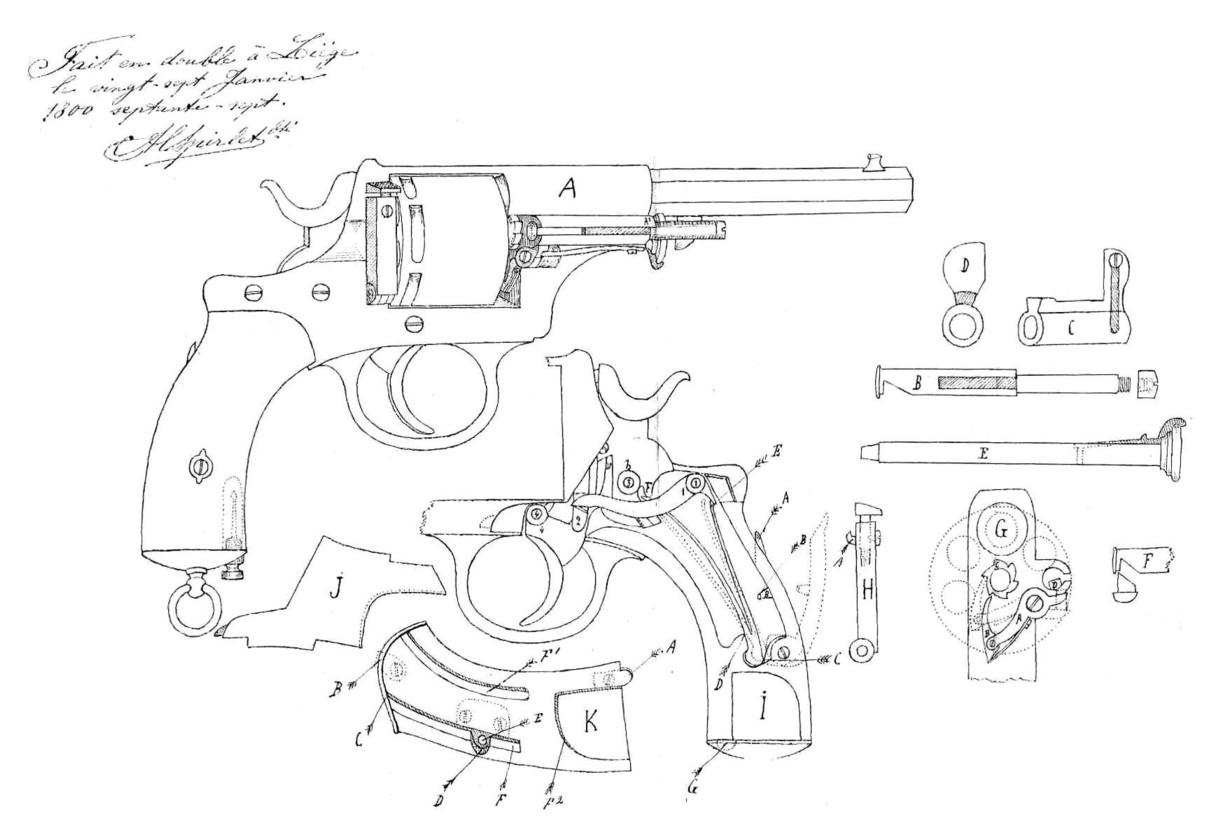
Certainly, on the patent design, the four main parts
are not marked ABCD, but as Henri Vuillemin writes, it is probably a “replica”
of Albert Spirlet to the “Galand War revolver also nicknamed ABC”. However,
Albert Spirlet’s ABCD revolver is disassembled. and easily goes up by following
the letters.
Henri Vuillemin also explains the ejection system,
“ingenious but complicated at will. In order to save time in the maneuvers of
extracting empty cases, the inventor carried out a veritable armoury pinning by
equipping the barrel with an additional rack on its inner side, replacing the
saucer. The movement of the rod, thanks to a device arranged on the right side
of the carcass and inside the frame, allows the cylinder to be rotated by one
sixth of a turn each time, the hammer having been previously placed on the notch
of the half-armed."
Like the example in the GDA, the revolver shown here
also has the oil tank in the stock.
We will be happy to come back to this subject if we
receive further information.
GP with the help of Henri Vuillemin, HPH and PHL.

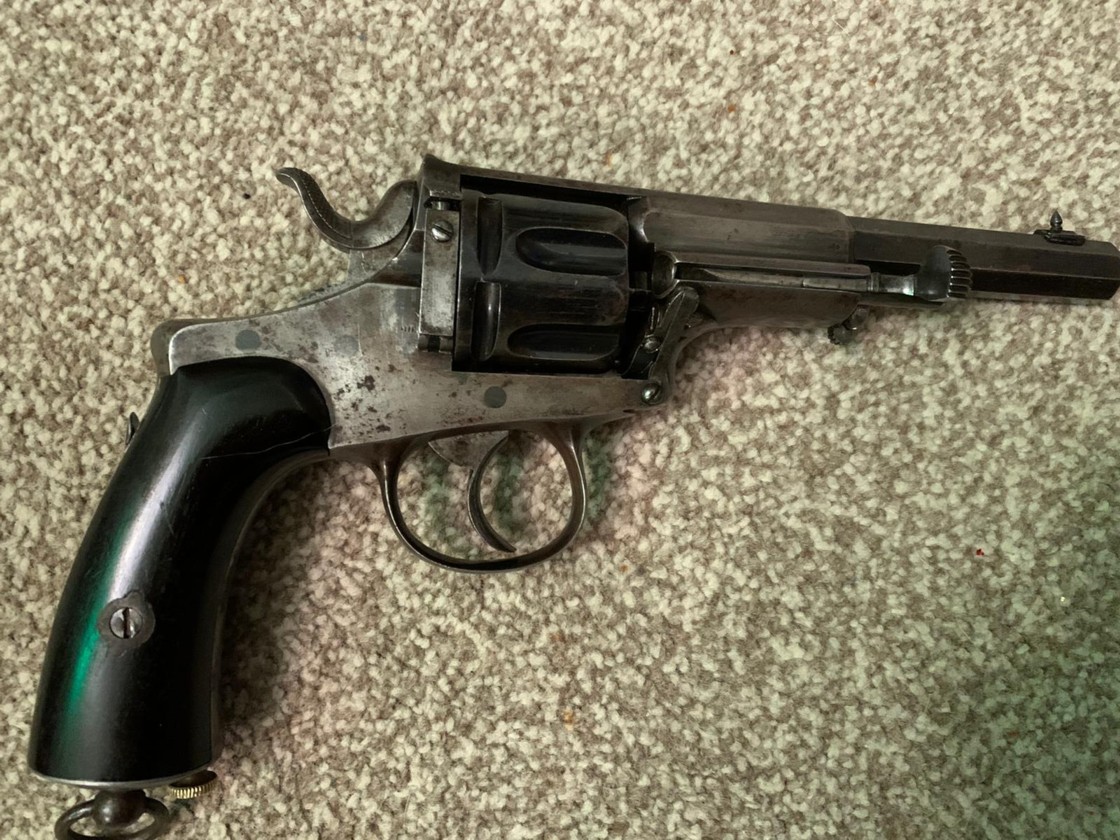
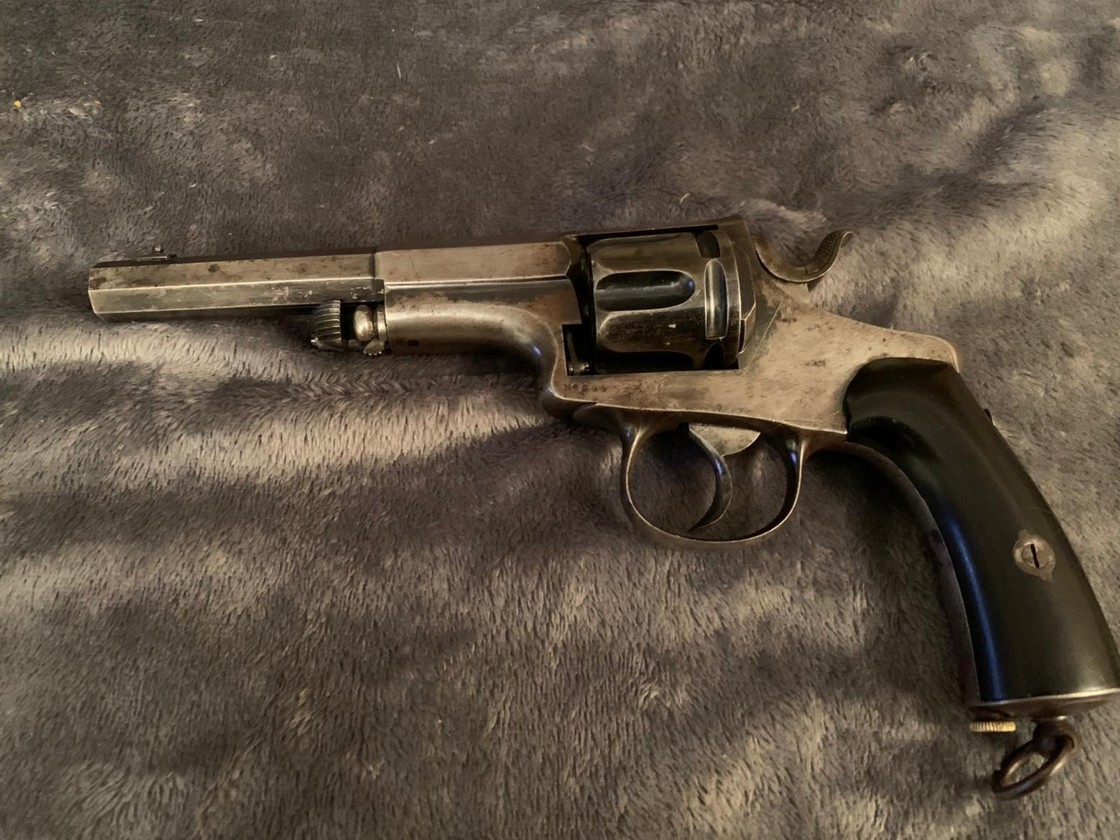
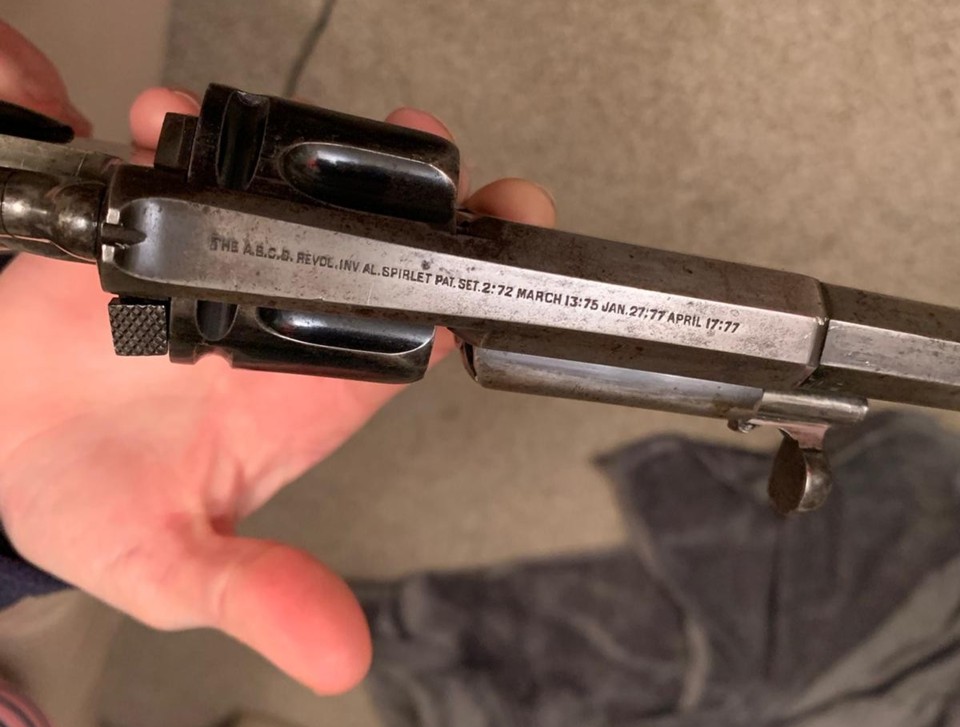
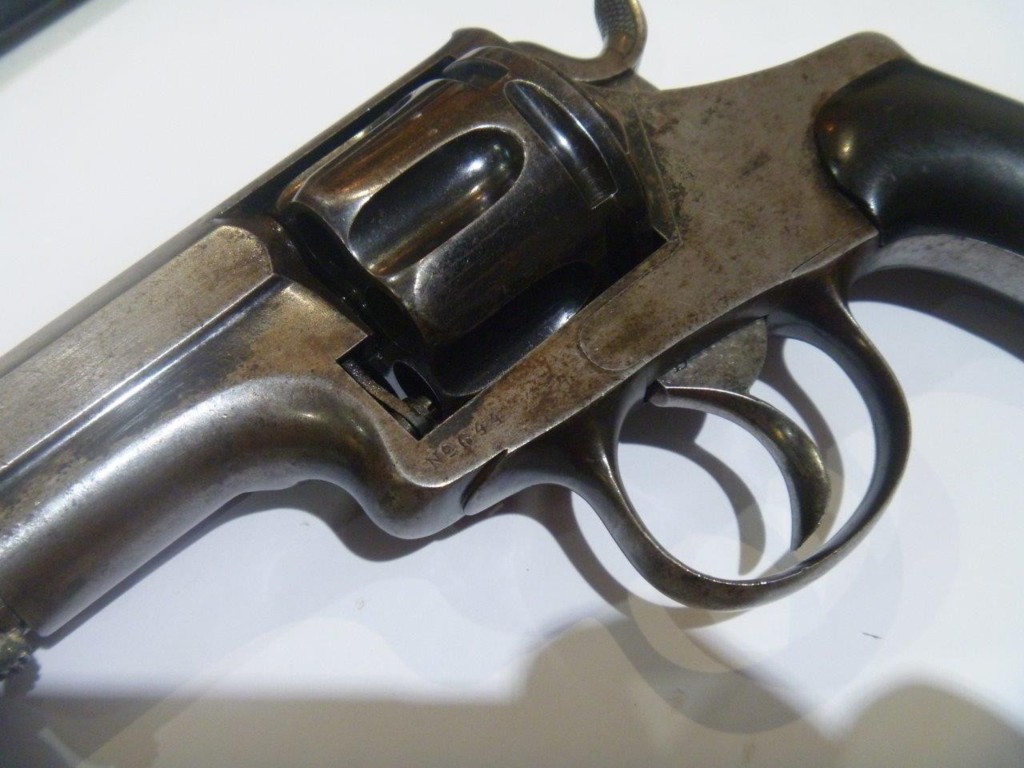
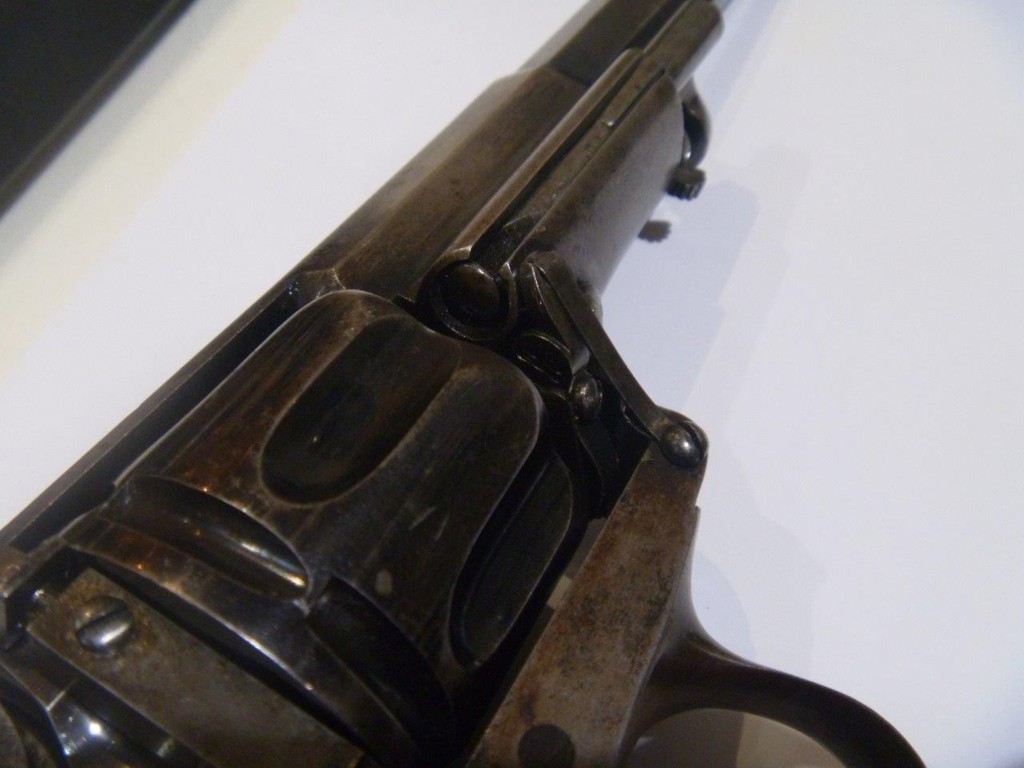

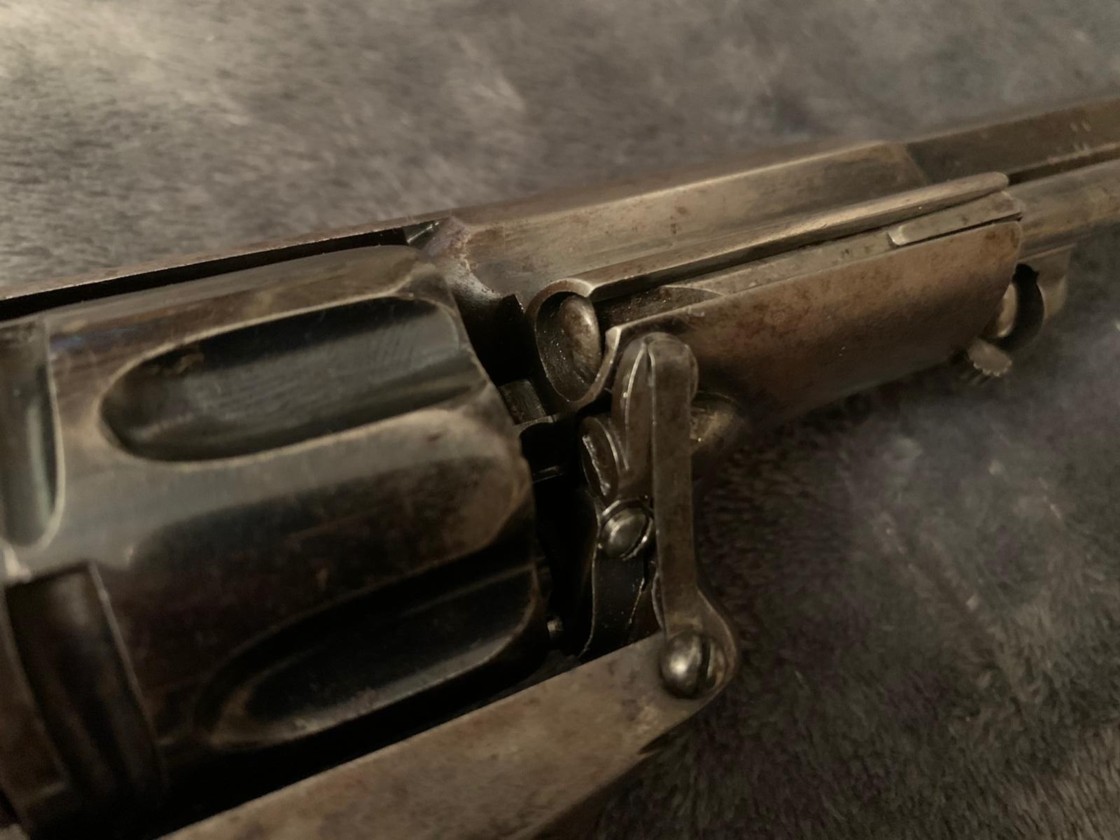

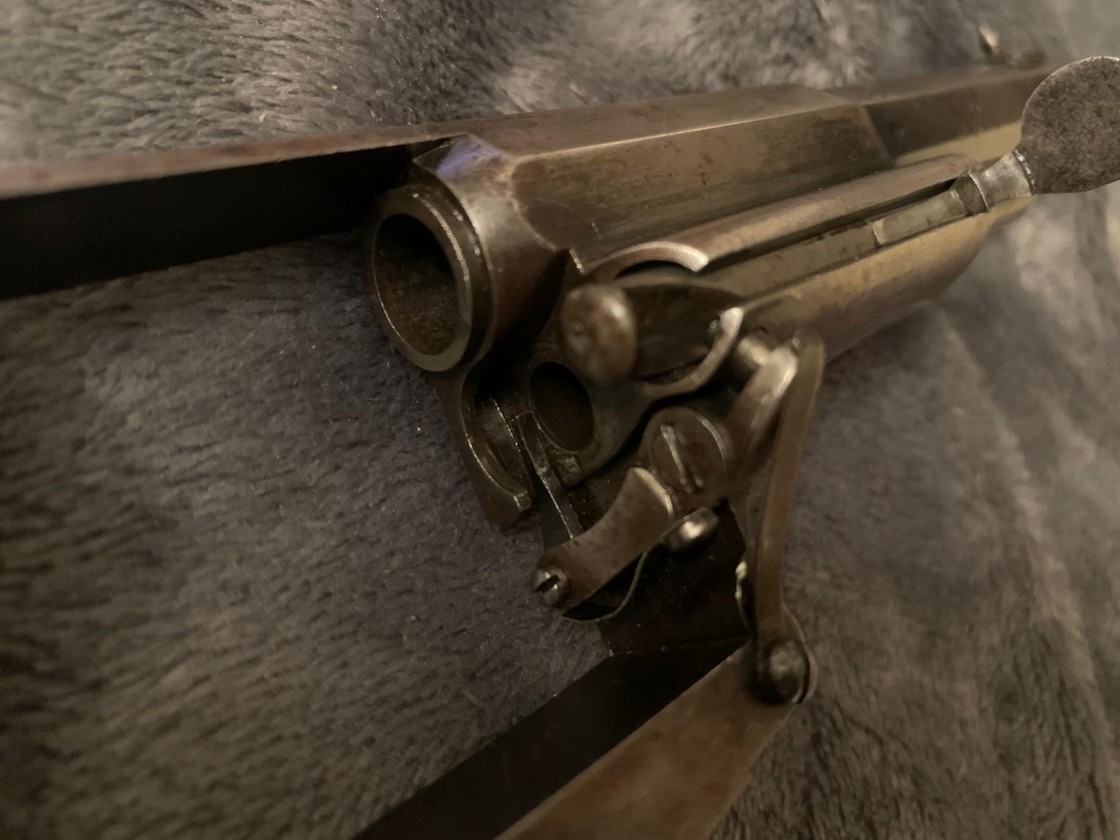
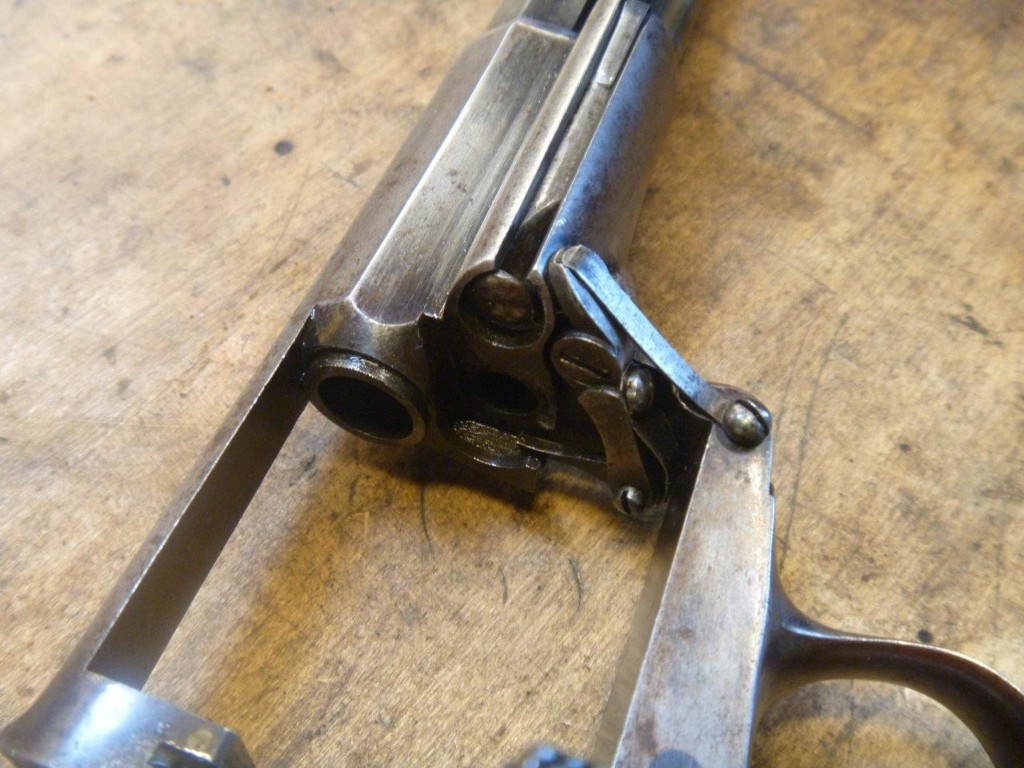
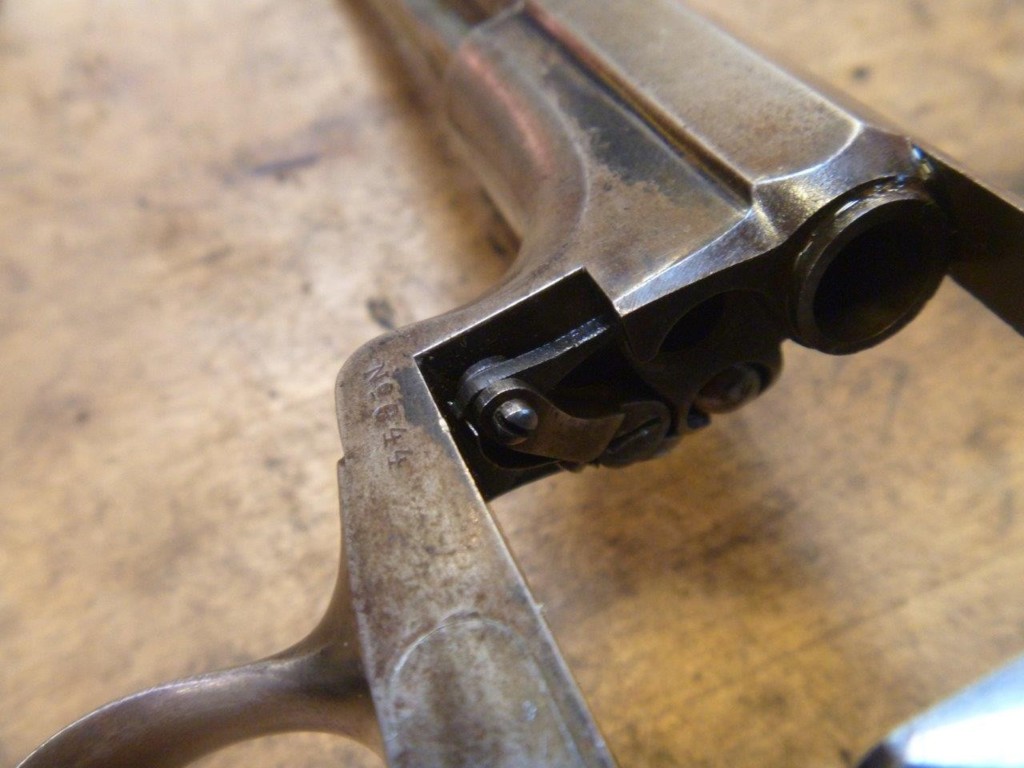

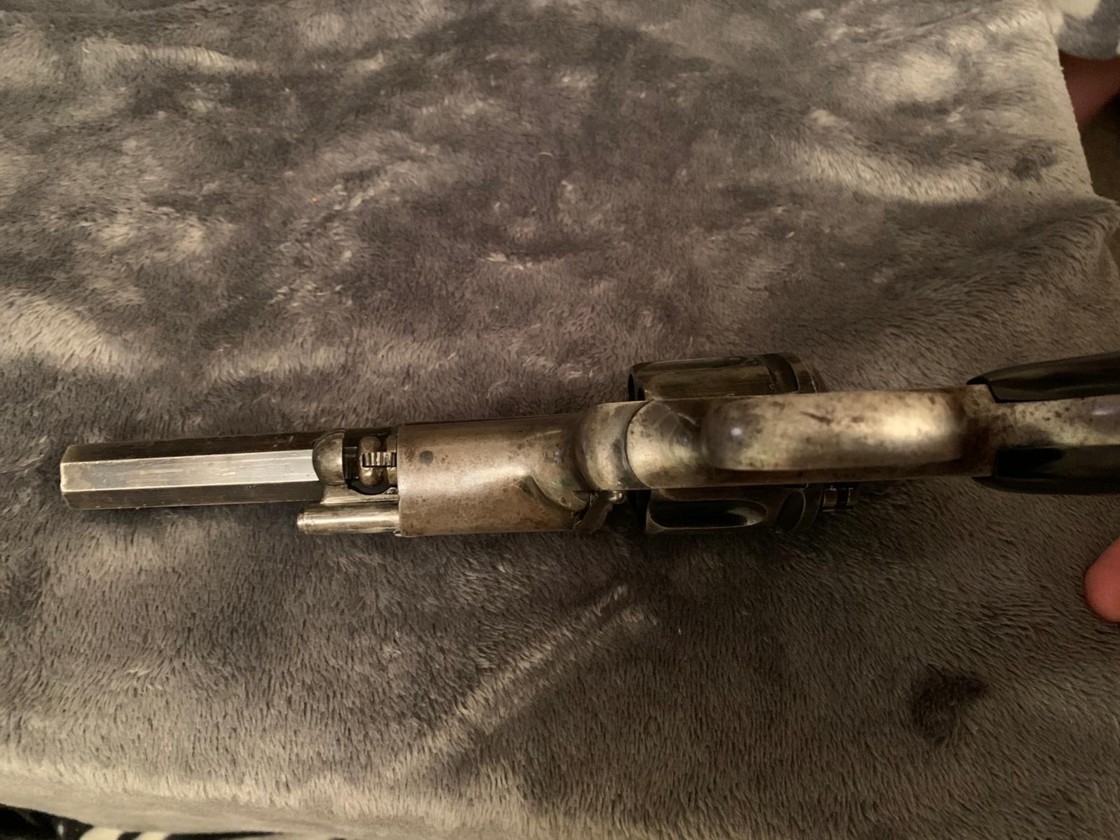
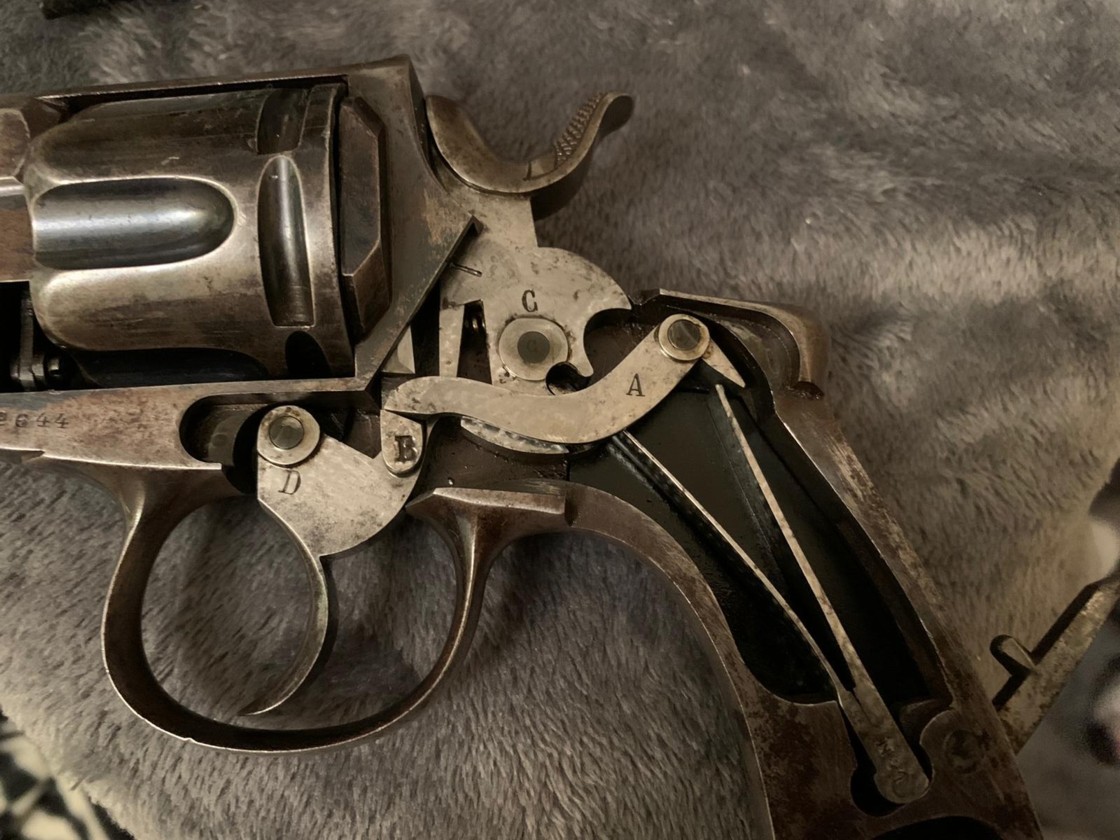

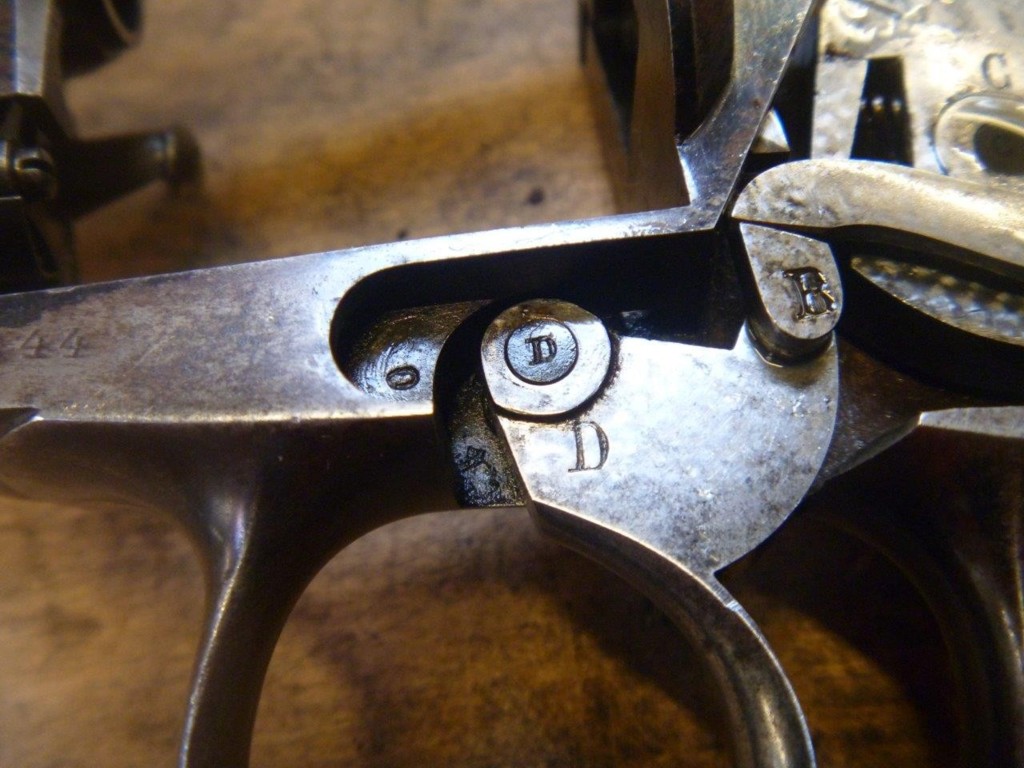
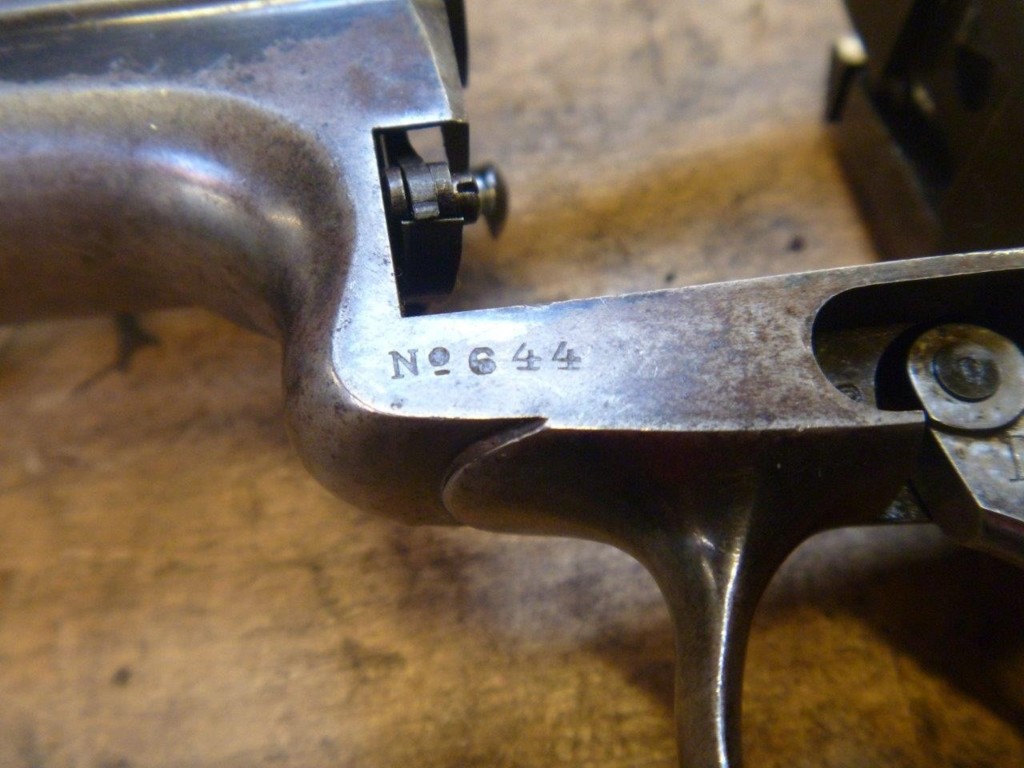
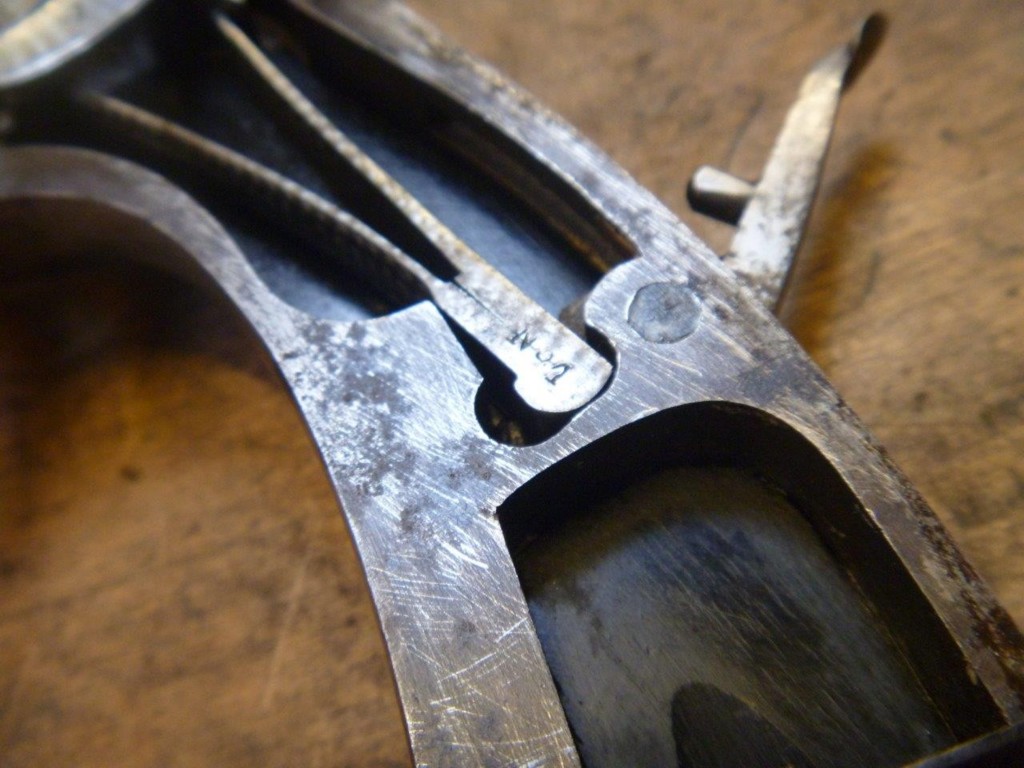
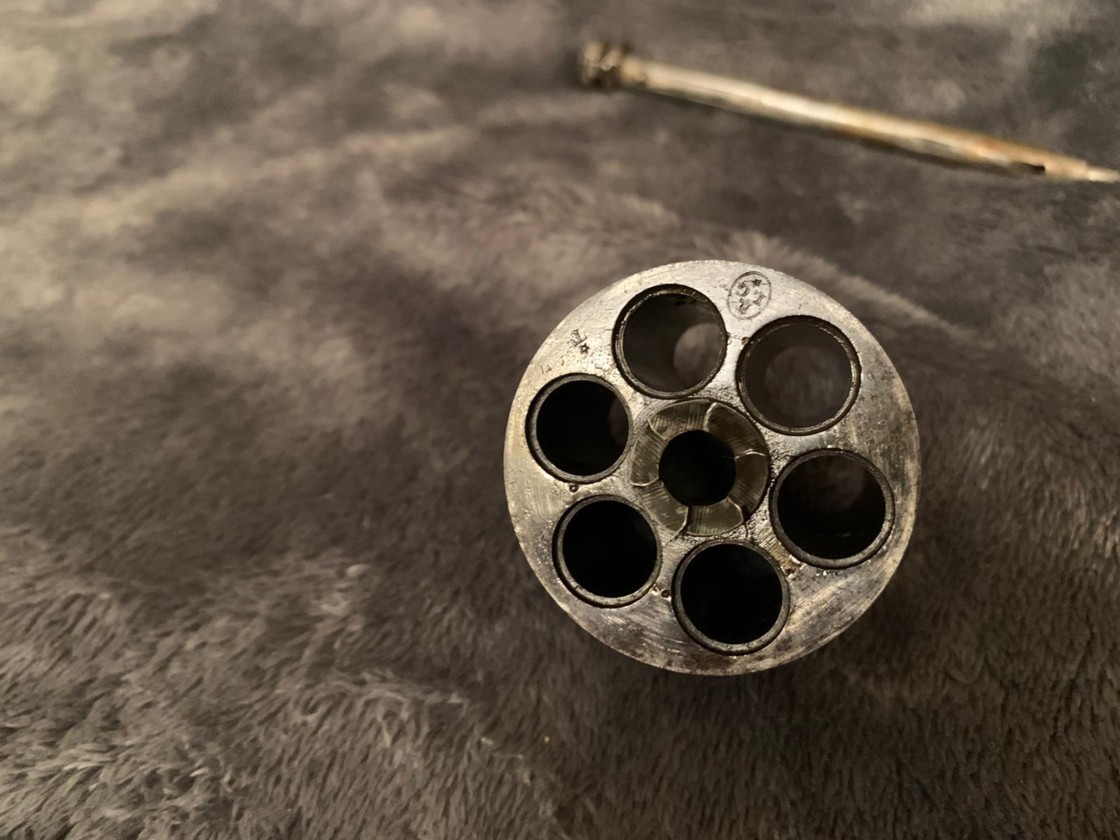
Spirlet Albert
This
is a classic hunting rifle juxtaposed with external hammers and a semi-pistol
butt.
The
barrels are made of Damascus Bernard. I am not able to read the inscription in
Cyrillic characters on the dealer's carrying case.
The
markings:
EL:
provisional test since 1852
ELG
on star in crowned oval: acceptance between 1893 and 1968
NO
FOR BALL: choke smoothbore barrel, in effect between 1878 and 1897
16. 8
and 16. 4: choked barrels cal in mm at 22 cm from the breech and at the mouth:
in effect between 1898 and 1910. This means that the nominal size could be 16.
On
this subject, there is a problem since we do not see - on the photos which were
transmitted to us in any case - any mention of calibre. However, this mention
was introduced in 1892 on the shape - for example - 70 by 20. 6, i. e. 70 mm for
the length of the chamber and 20. 6 for the diameter after the optional test.
However, as mentioned above, the weapon was tested after 1893 and even in
principle after 1898.
Peron: inspection since 1853.
M and
Z under star: countermarks of controllers between 1877 and 1968.
U
crowned: this punch cannot be that of a countermark of a controller between 1853
and 1877. But what is it then?
PW:
unidentified
HB:
we thought for a moment about a member of the Bernard family but we only know
Emile and Léopold.
AS
patented crowned: it could be Albert Spirlet, with the emphasis on the
conditional since even if we find at the bottom of the link below the same brand
AS crowned in Albert Spirlet's production, the latter was - to our knowledge in
any case - specialized in revolvers, and not in shotguns.
GP
Spirlet with removable plate

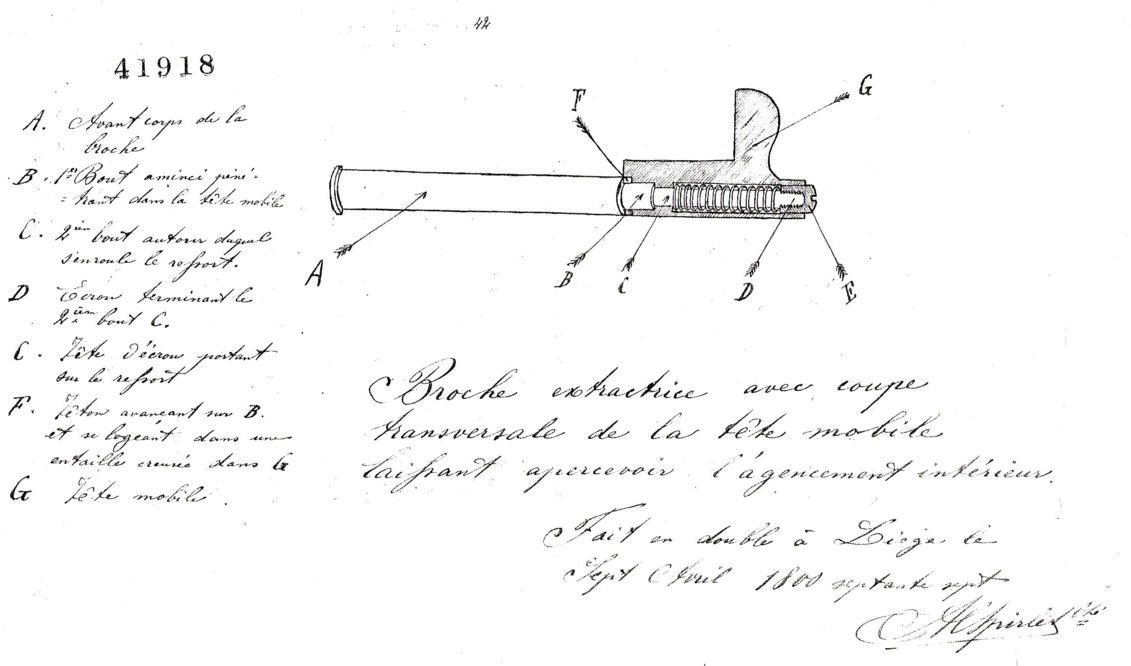


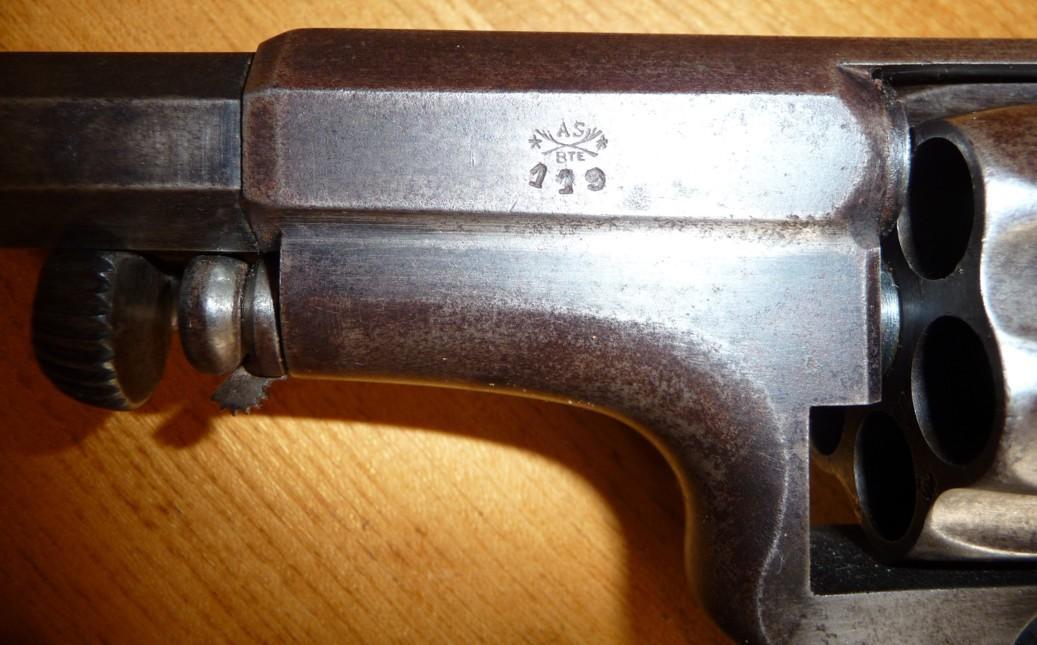
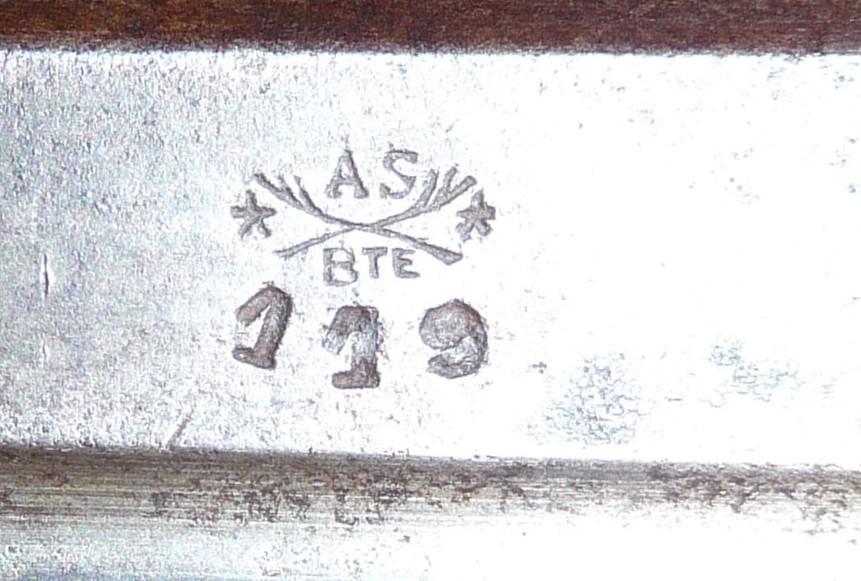
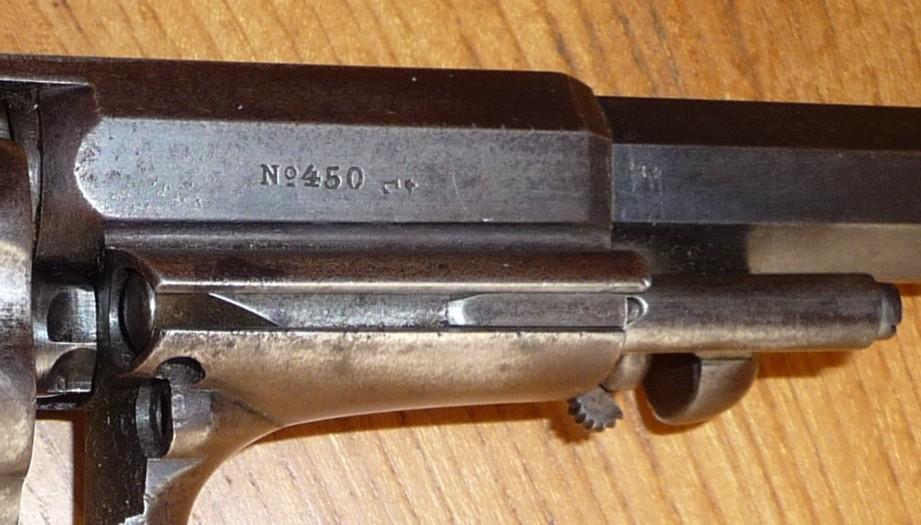
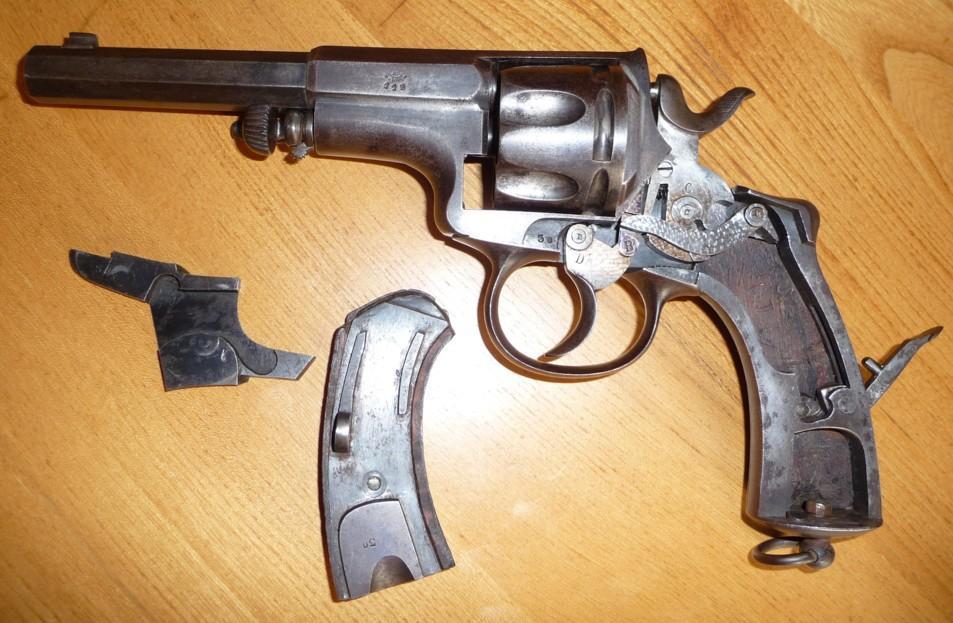
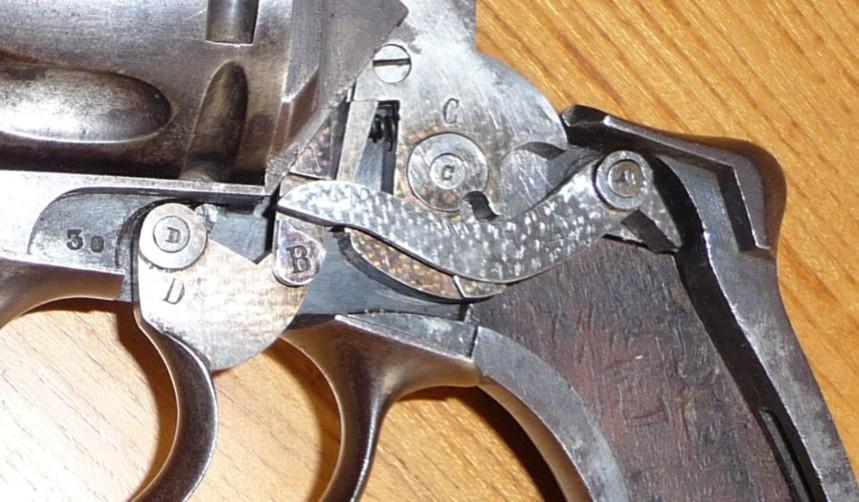
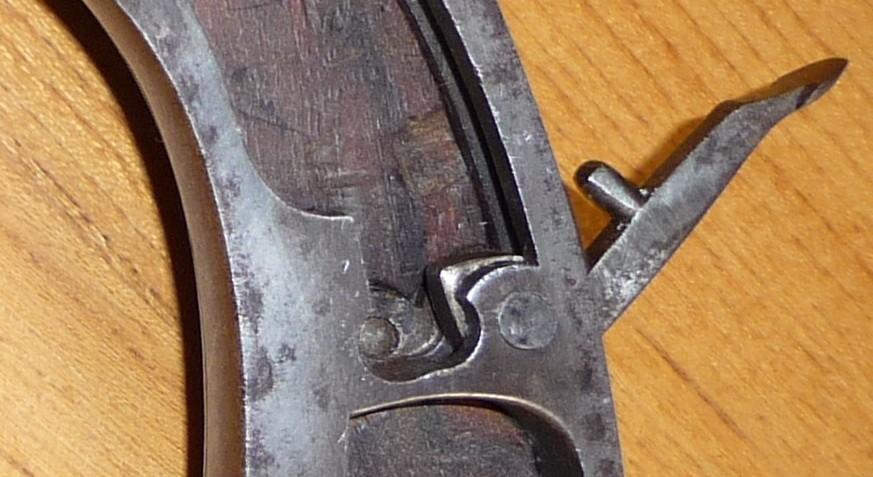
A Spirlet on restoration (2004)
Thanks to John W. for the photos.
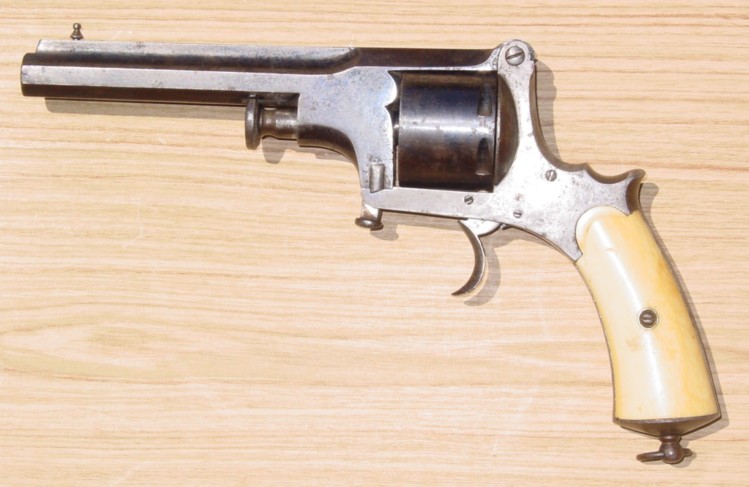
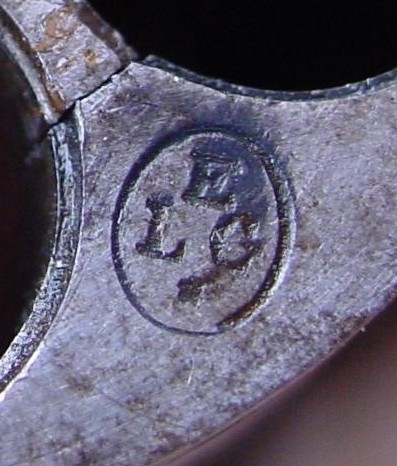
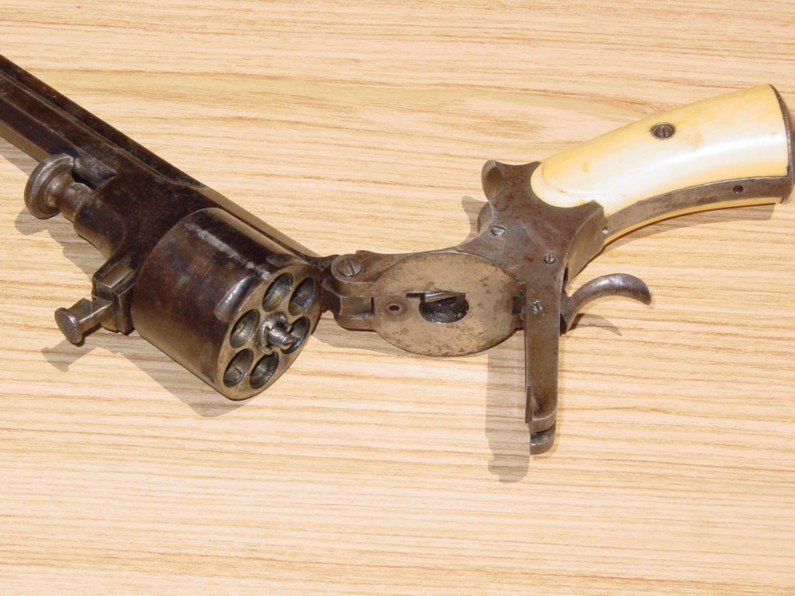
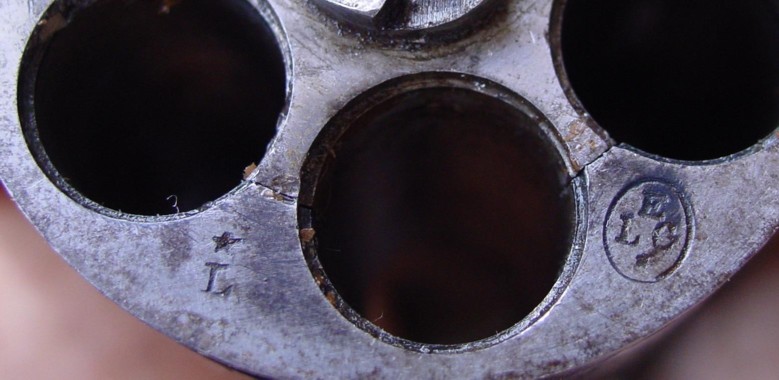
The part manufactured to replace the guard of broken trigger.
Superb work!
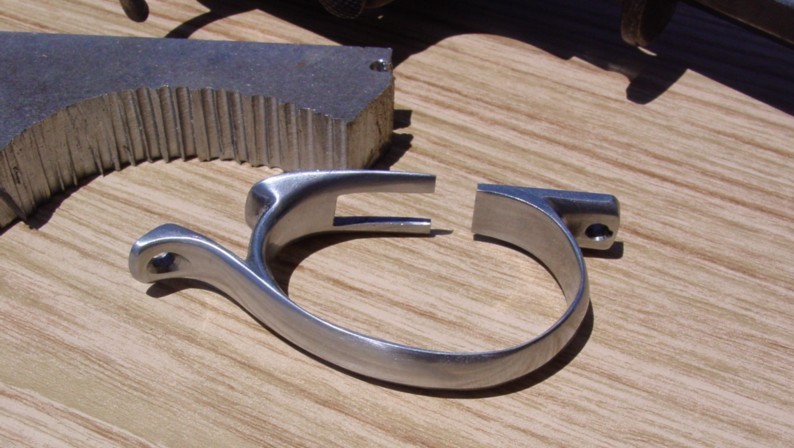
Here it is after restoration (2007)
Installation of the new guard of trigger

The new front sight
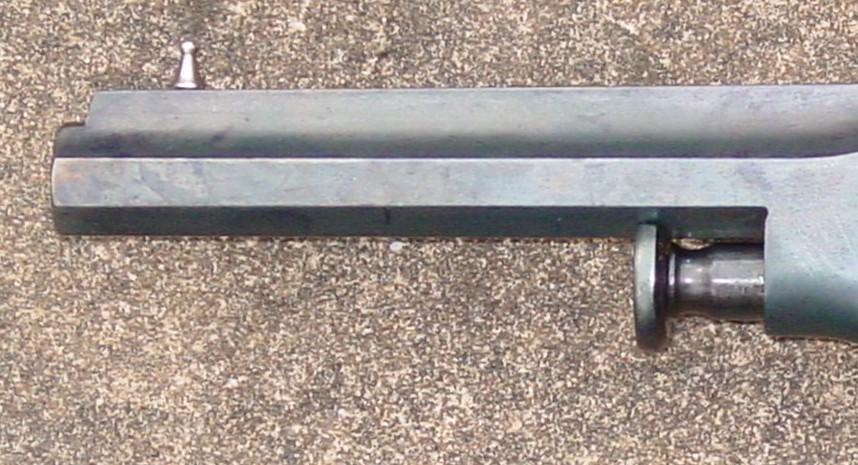
The manufacture of the new hammer
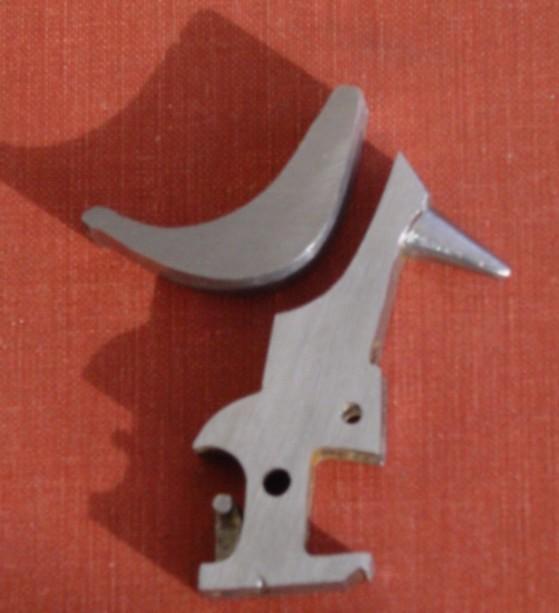
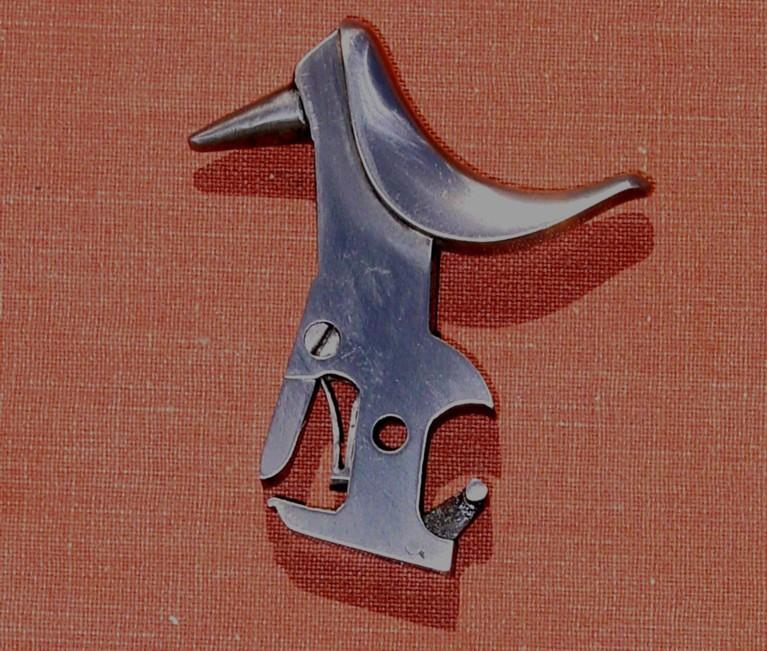
And here is the weapon as it is presented now

Spirlet Albert
Quai de la Boverie, 5 à Liège
Belgian proof house of Liège 1912 – 1939.
Spirlet is known in Europe as being the inventor of the revolver to the screwed gun rocking upwards and behind (standard tip-up); in fact, this type of revolver was already disseminated before the project of Spirlet which remainder did not advance any claim.
Its patent 2107/1870 covered a system of locking and more particularly a system of ejection adapted to the revolver tip-up (Tip-up, revolver whose foldable gun can be reversed with the back.) where the pin of the axis under the gun finished in a large protuberance; after the opening of the weapon, a blow printed on this protuberance forced the plate of extraction which covered barrel to eject the empty cases.
Many tanks to "MAGAZIN ROYAL" for the pictures.
Photos Littlegun
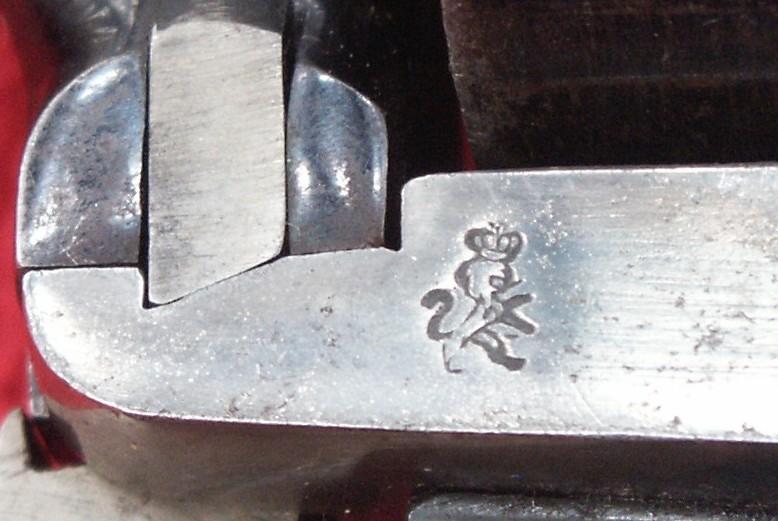
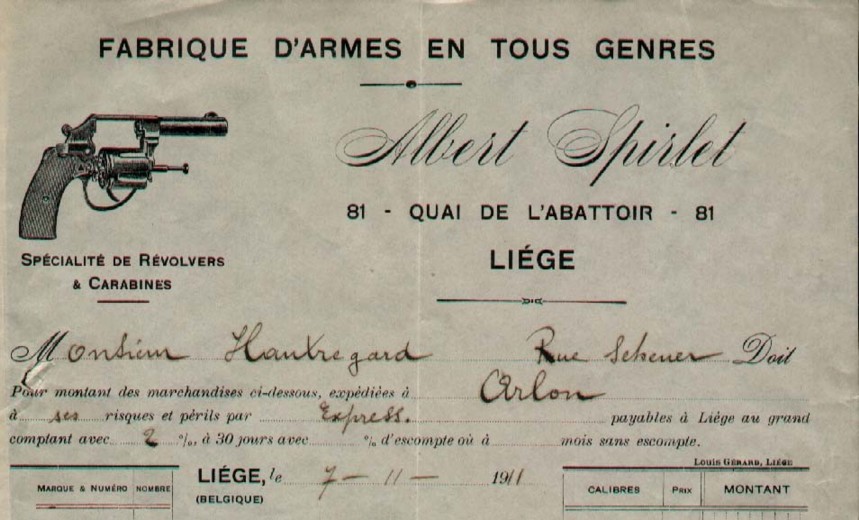
Spirlet 1869
Revolver Tip-Up - Cal. 11.5 (45 ?)
Engraved "AL SPIRLET & CIE" "ACIER FONDU"
With the proof marks, this gun were produce after 11 july 1893 et before 30 january 1894 By Charles Spirlet "arquebusier", Liège and son of Albert Spirlet "inventor" of the model in 1870 (patent date) himself son of Edouard Spirlet .
Photographs and technical details friendly send by J.Ph. D. with my grateful thanks.
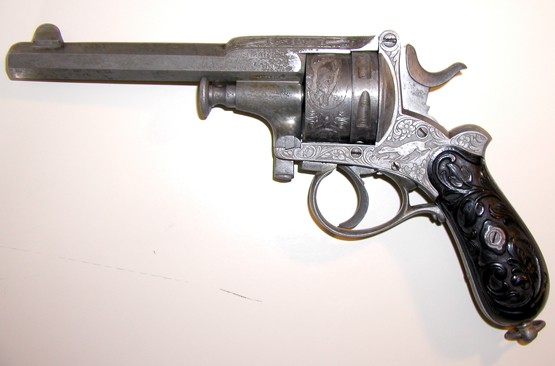

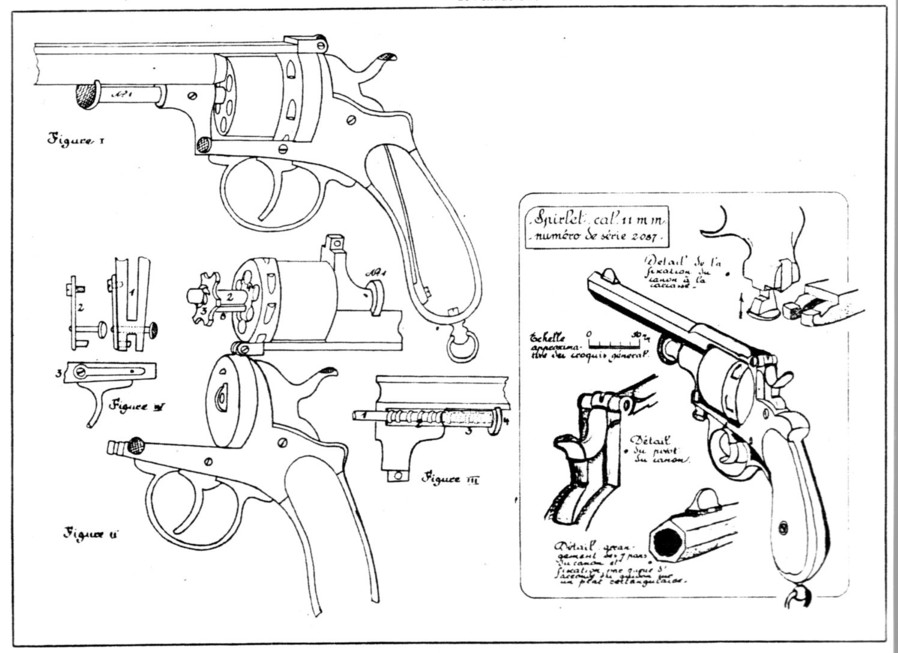
Gun for the slaughter-houses with betails of Spirlet
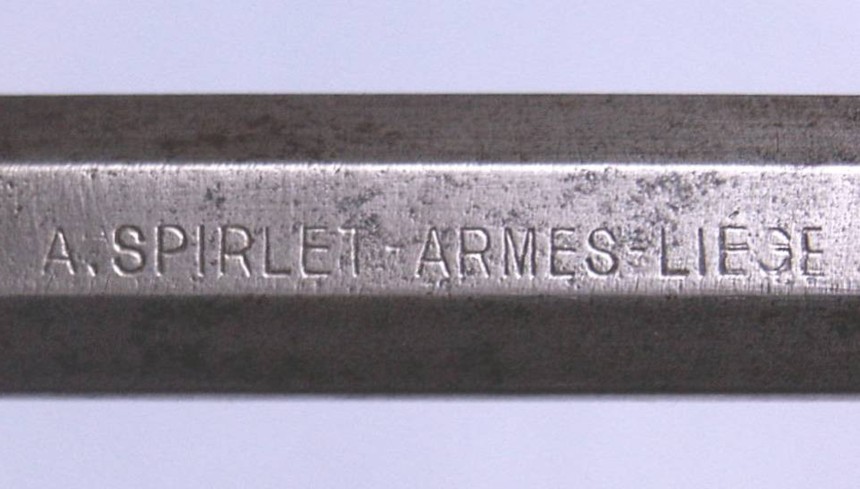

Albert Spirlet
Apparatus kills cattle of Albert Spirlet directly related to the patent which follows.
If one refers at the date of filing of the patent which follows we can locate the manufacture of the apparatus after 1922.
Characteristics.
Weight: 750gr
Gauge: 7.8.
The apparatus carries the punches of the proofhouse of Liege, namely:
PV surmounted of a stylized lion: test with modern powder of use of 1898 to 1968.
A spangled: against mark of the controller Mr. Woit Nicolas in service of 1911 to 1940.
Spangled ELG in a crowned oval: in use after 1893.
The punch of the Peron of Liège: in use of the 16 06 1853 at our days.
AS in a crowned rhombus: punch used by Albert Spirlet.
Note:
Although the gauge is 7.8 mm, I recorded with precision the diameter of 7.56 mm in the gun.
Max

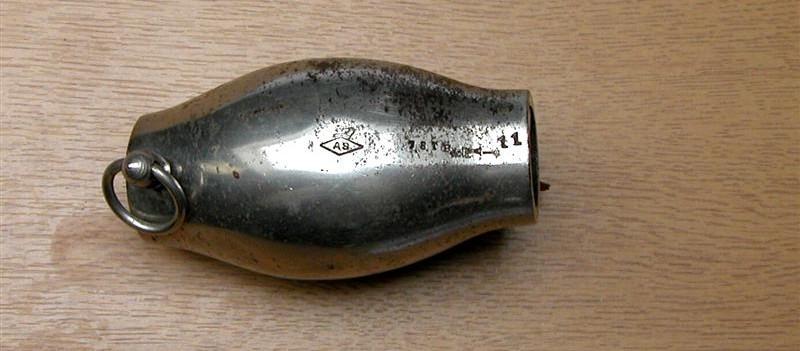

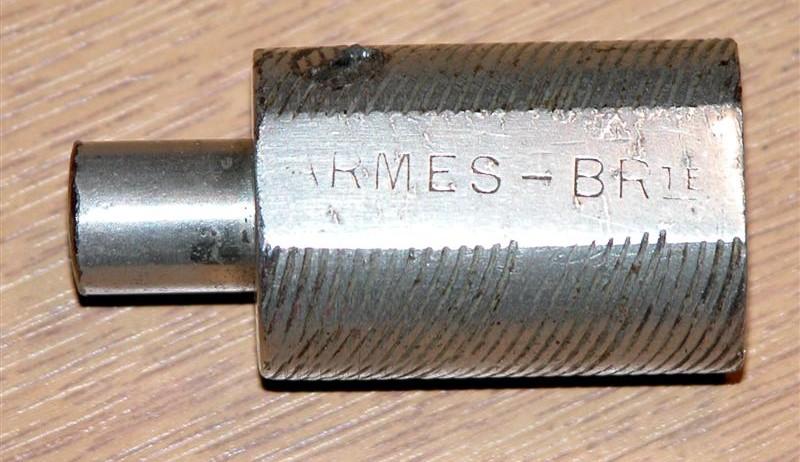
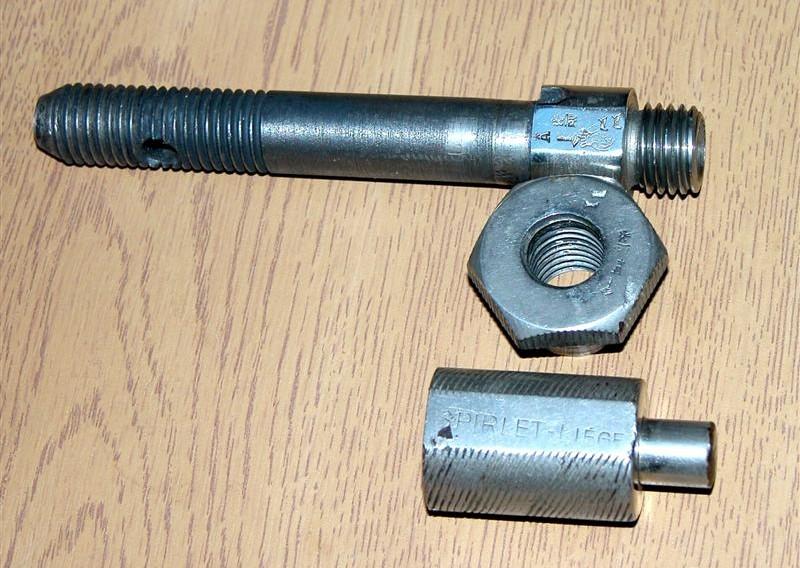
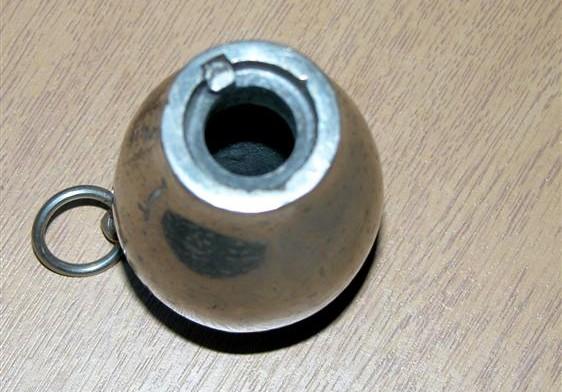
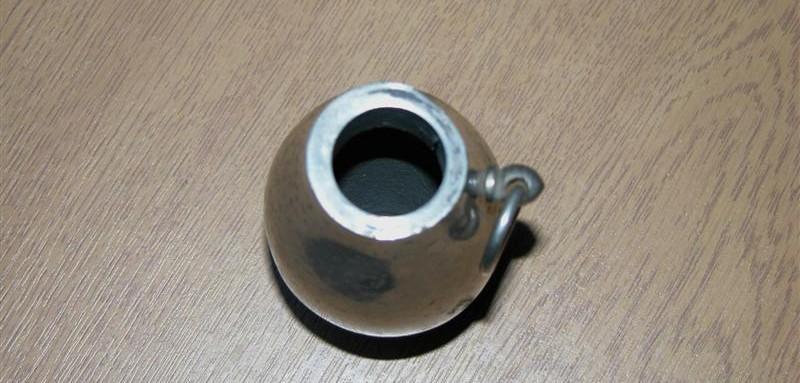

Spirlet patent of this machine.


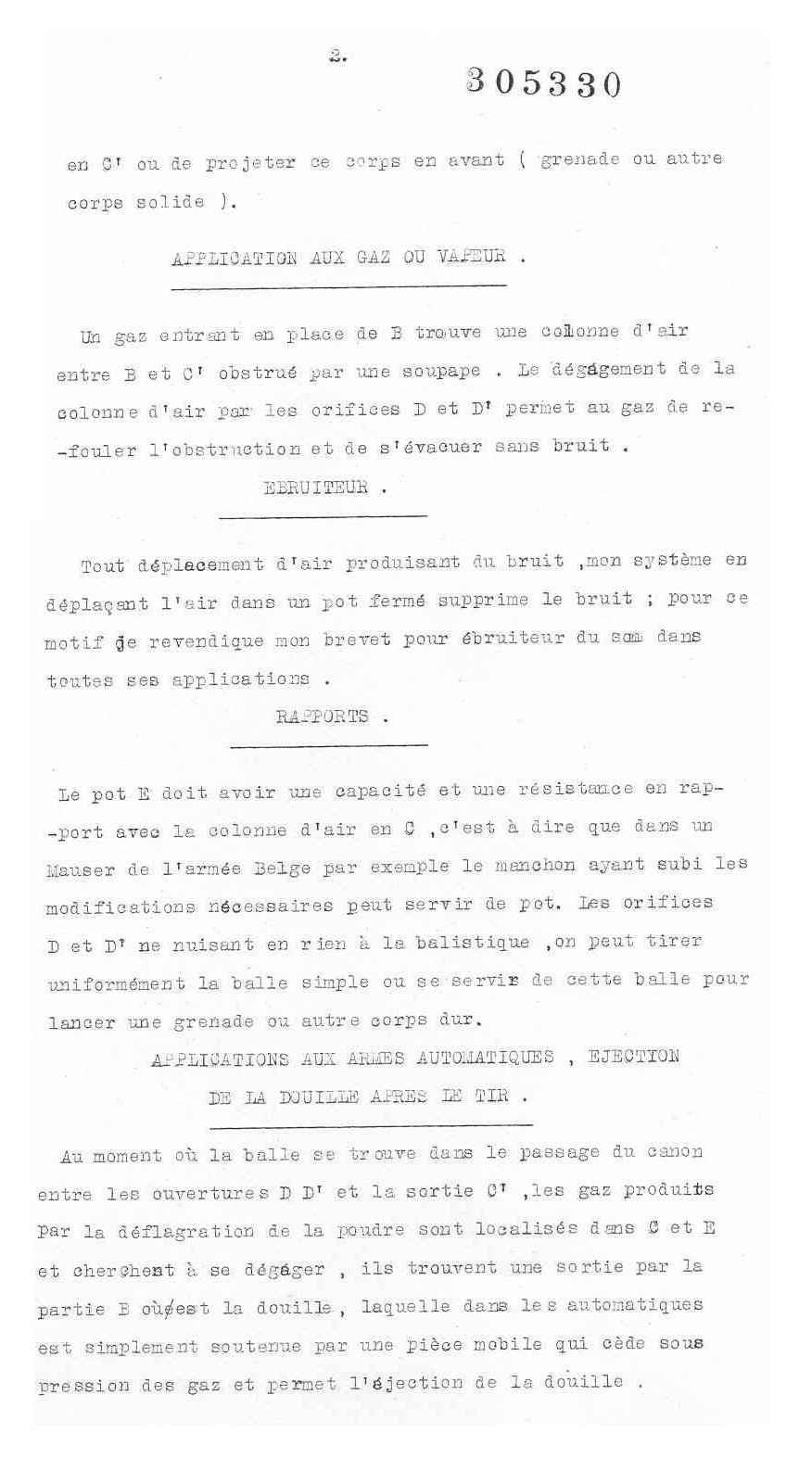
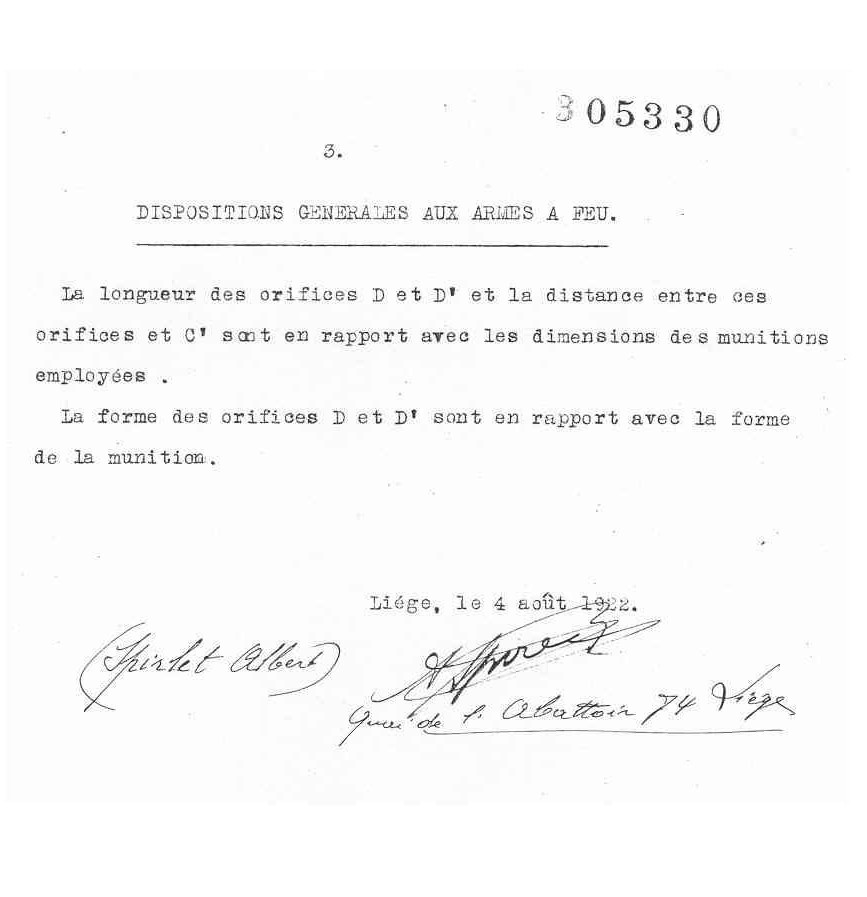
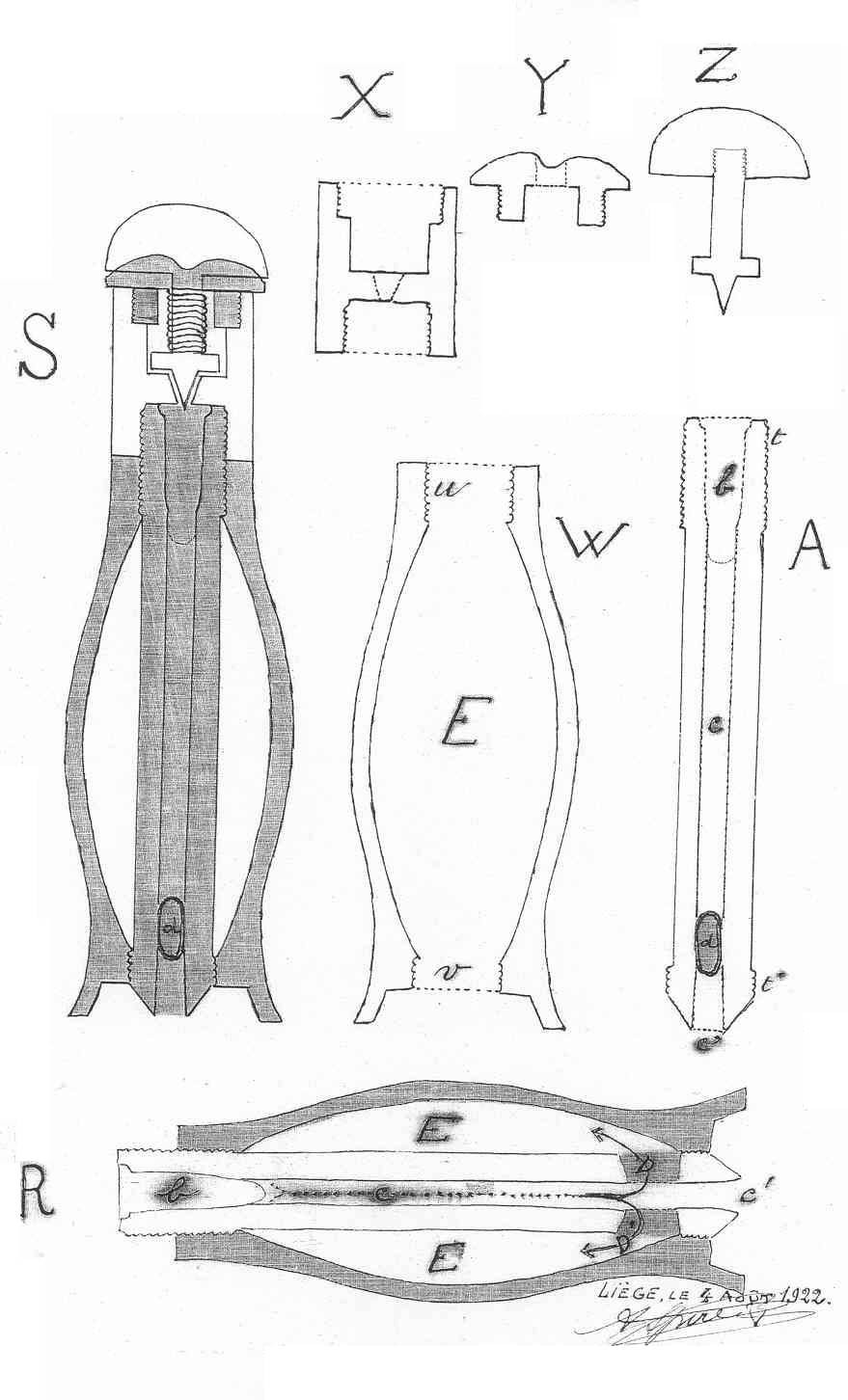
Revolver crowned
It is about a revolver vélodog hammerless with folding trigger, loading by side door, unloading using the rod being used as axis of barrel, grips with palmettos way ebony squared.
Punches
They are those of the proof house of Liège is:
Spangled ELG in a crowned oval: acceptance post 1893;
P and AD spangled: countermarks of the controllers post 1877;
PV surmounted of a stylized lion: test with the powder lives post 1898
The manufacturer:
AS Crowned could be Albert SPIRLET. (Evoked on the site). He made use of several marks AS in a rhombus lying and crowned - AS in a rhombus laid down without crown - S in a rhombus lying and crowned.
I am unaware of the significance of D in a circle!
GG
Photos Littlegun
